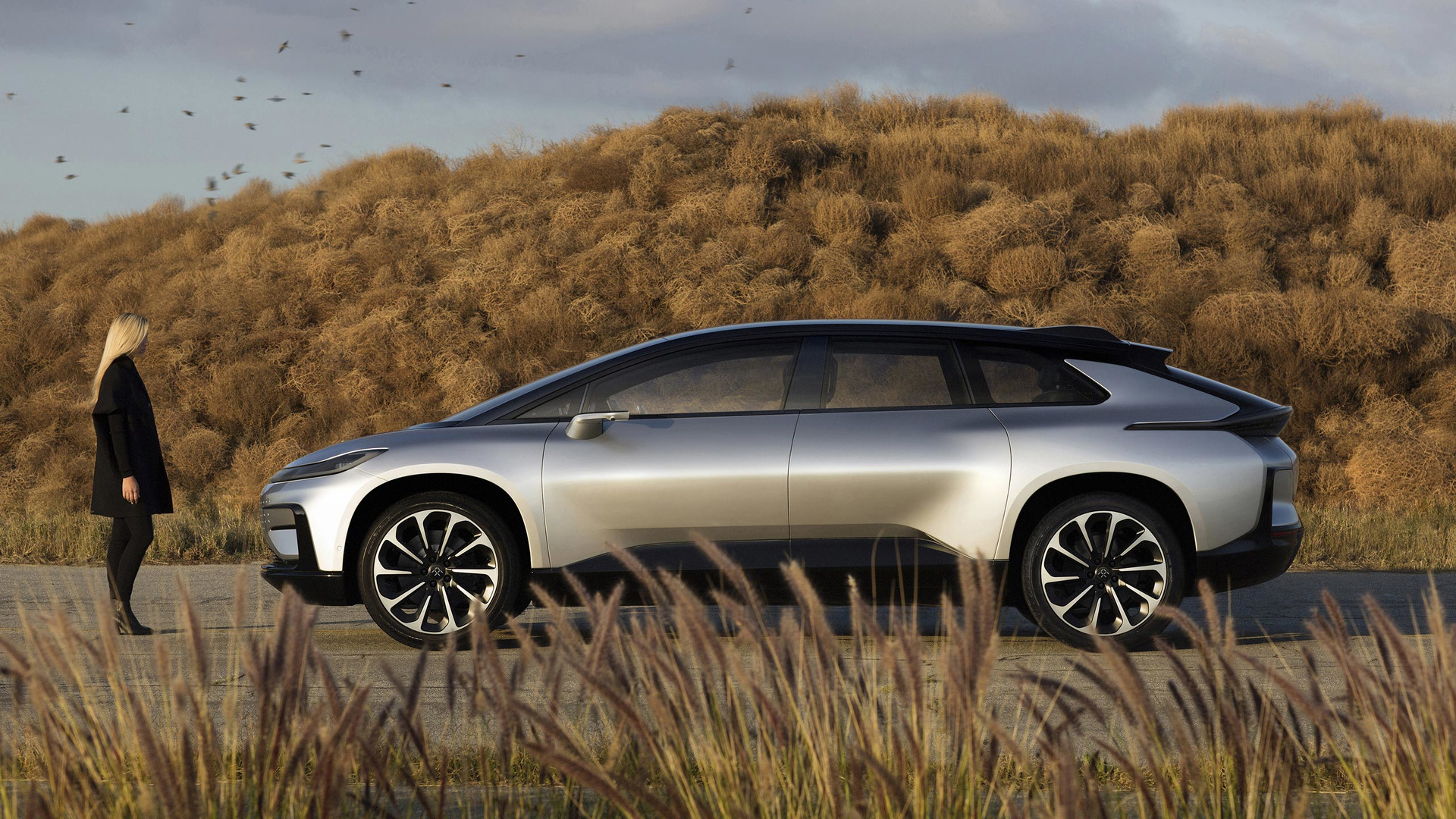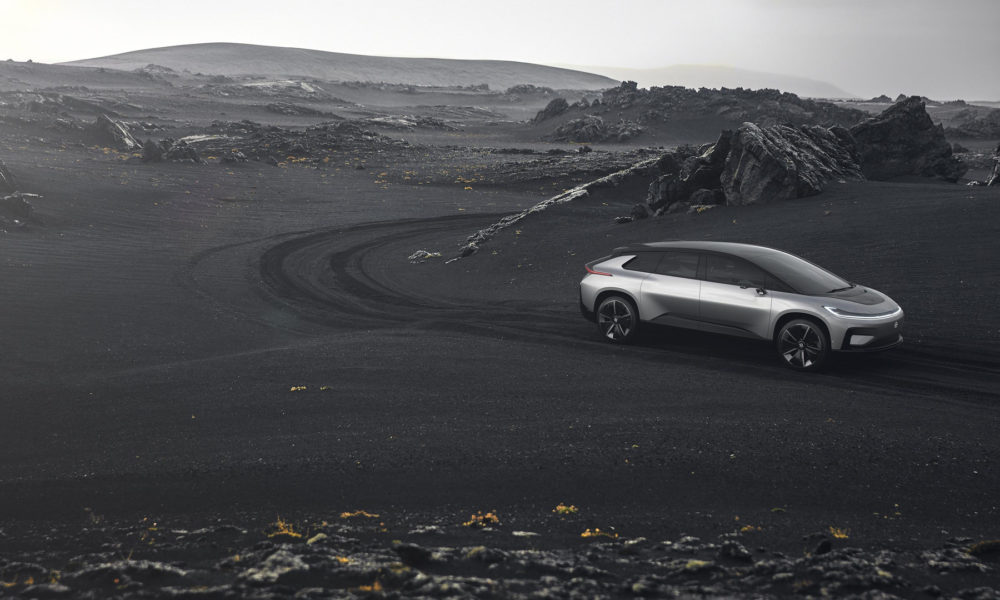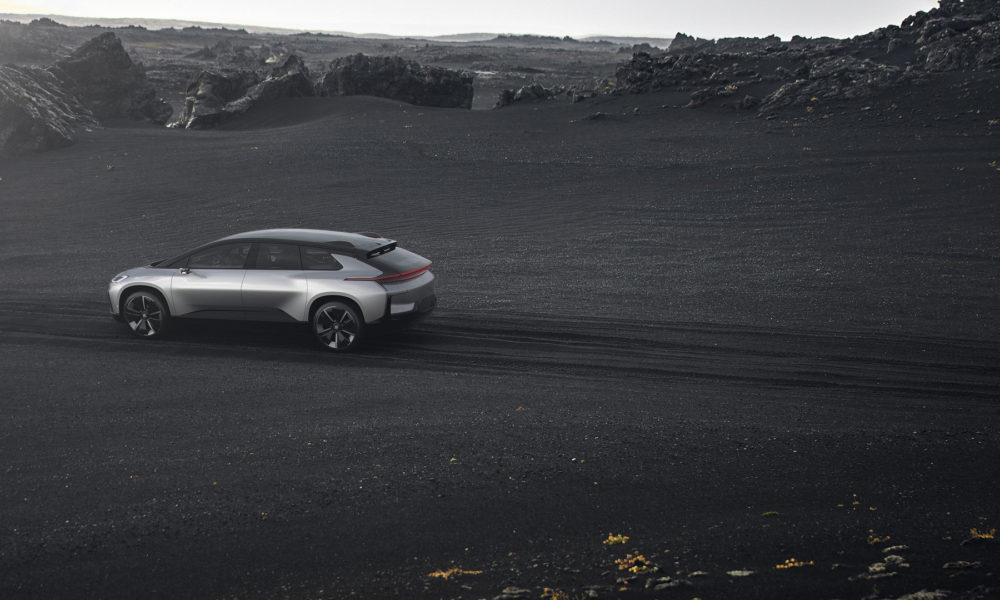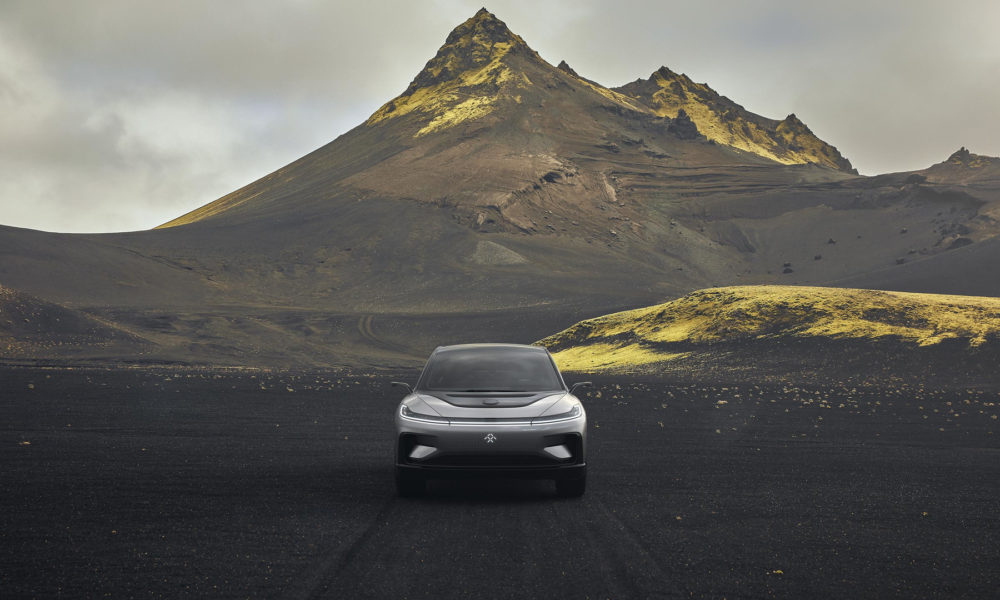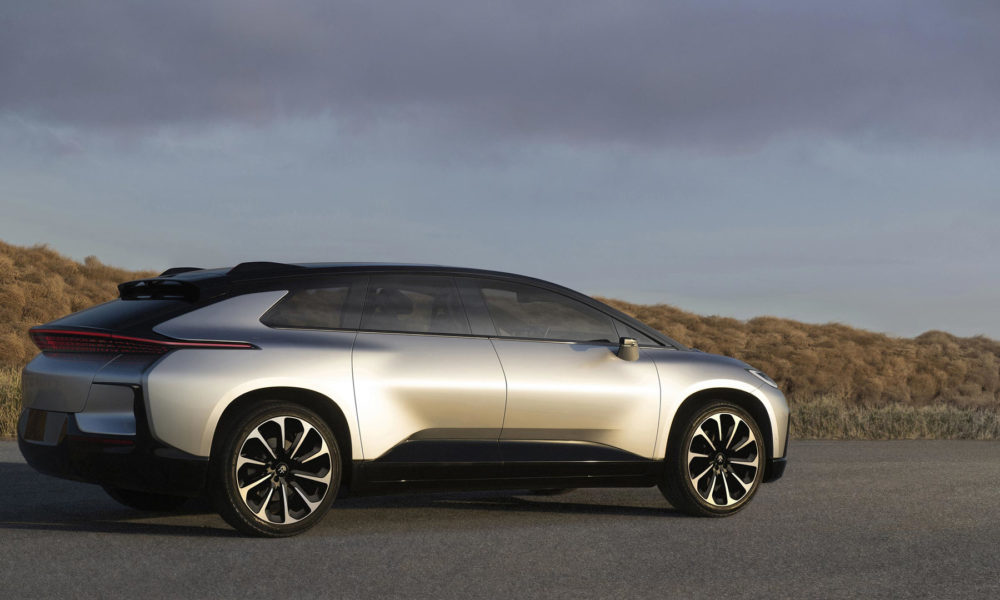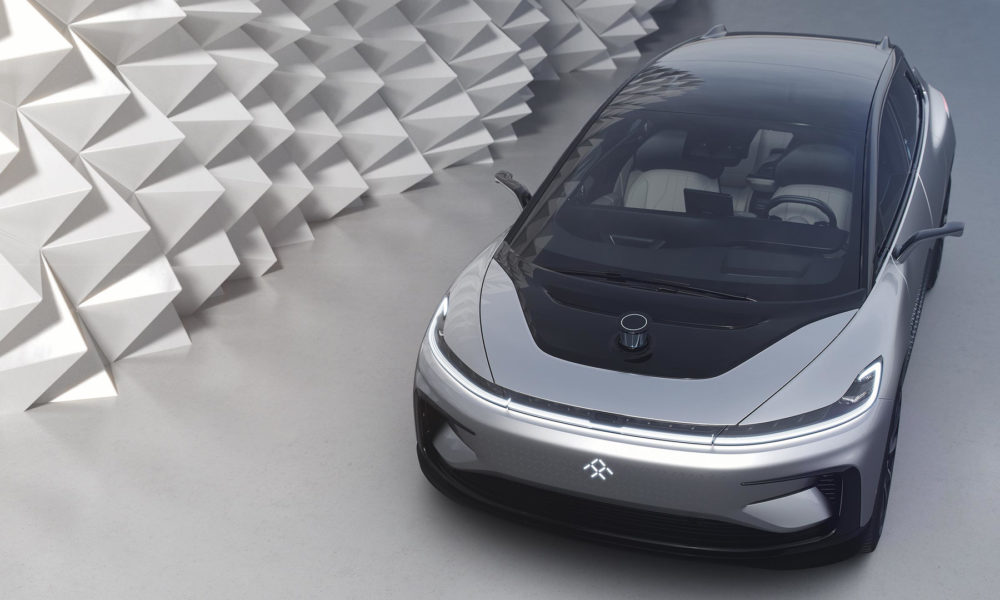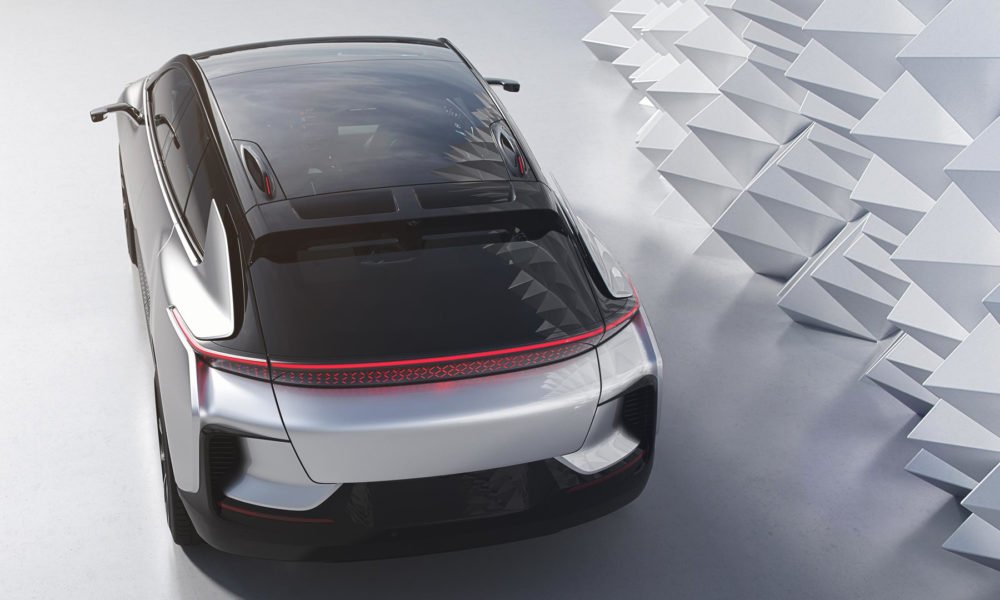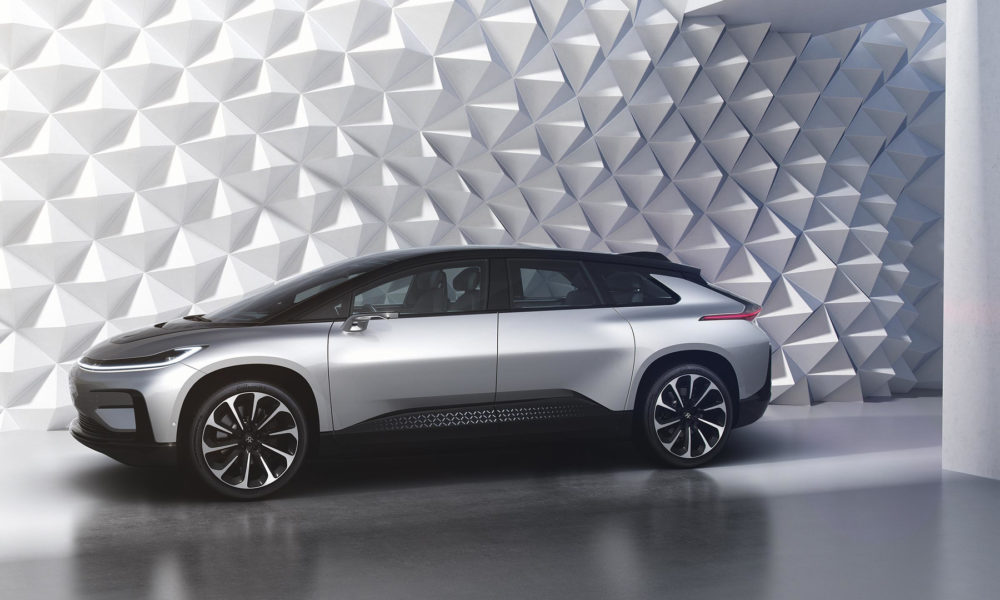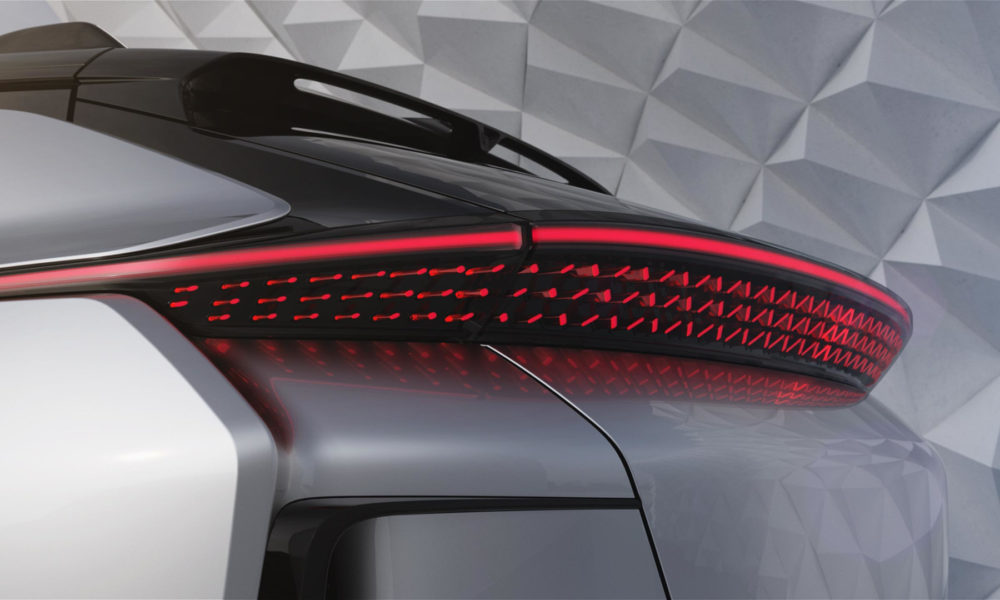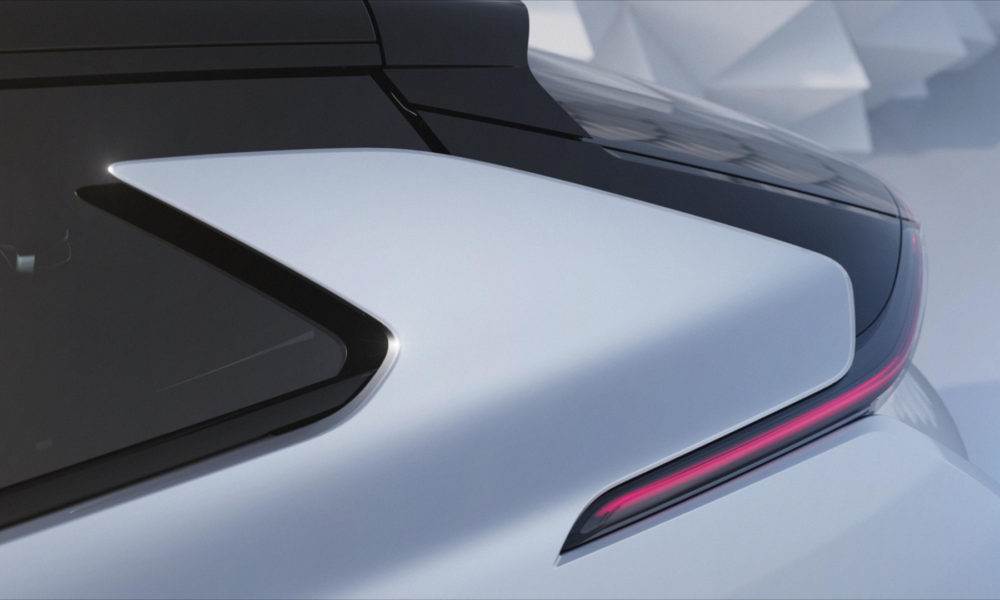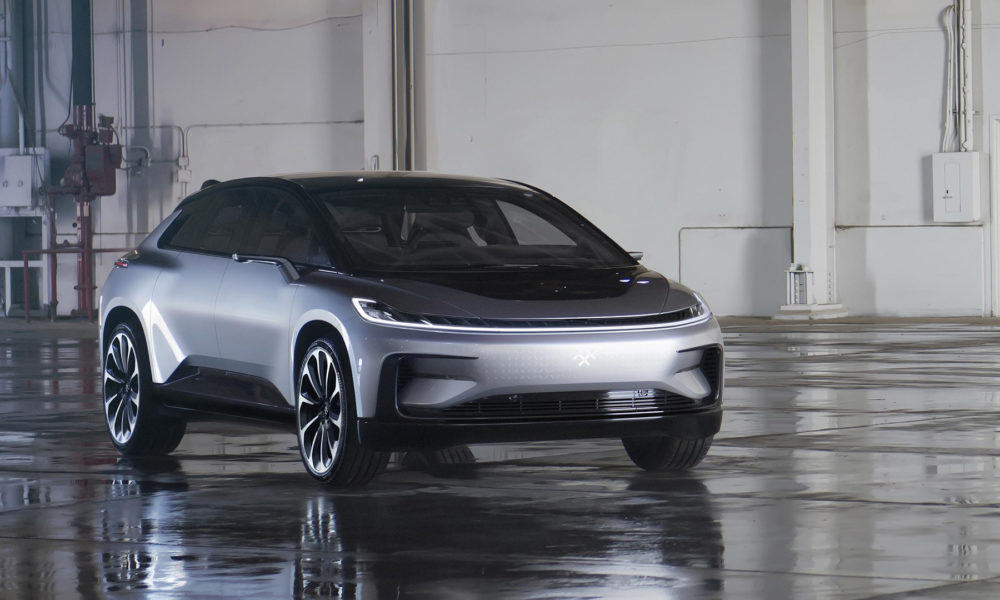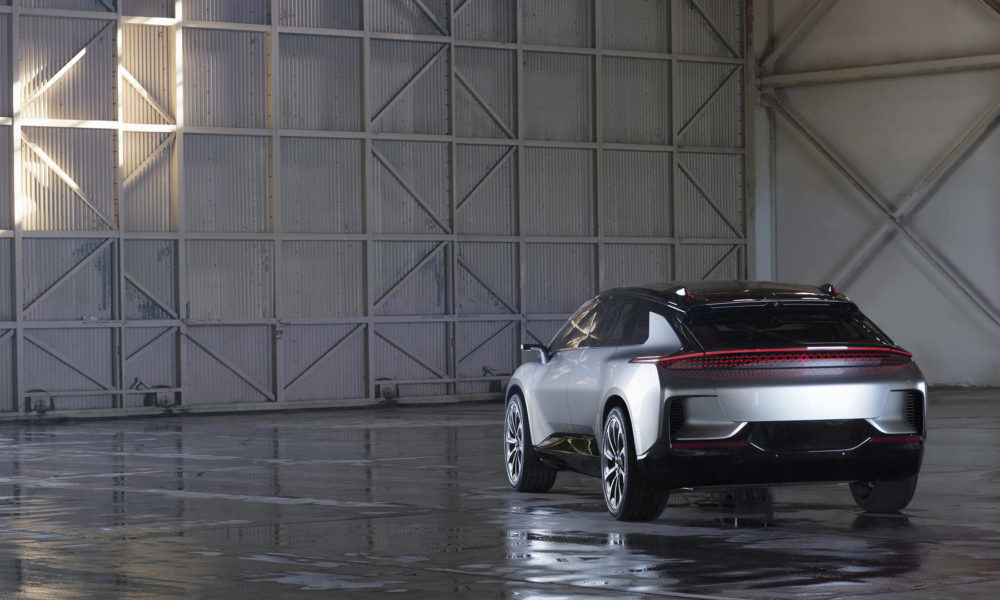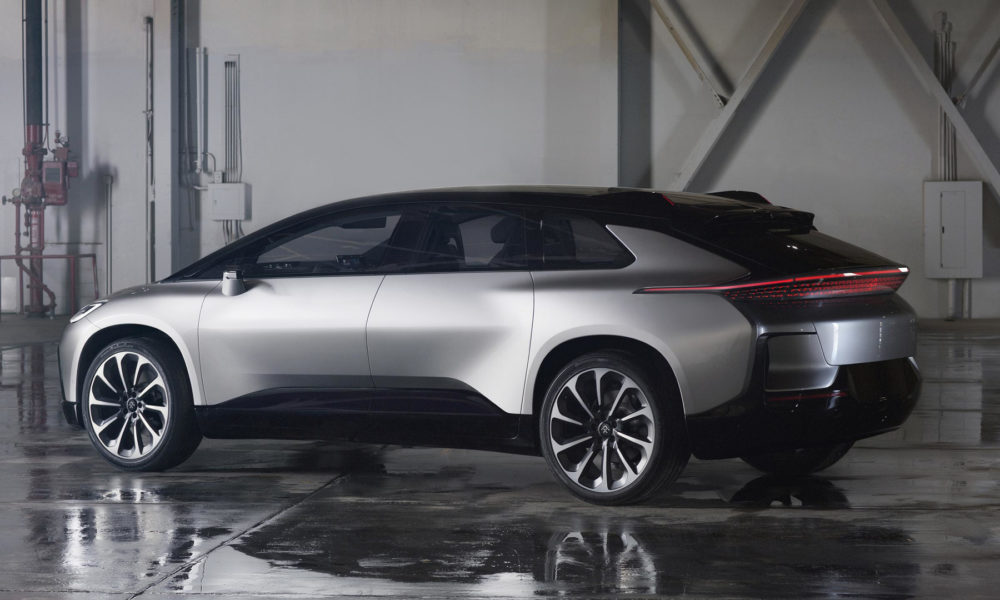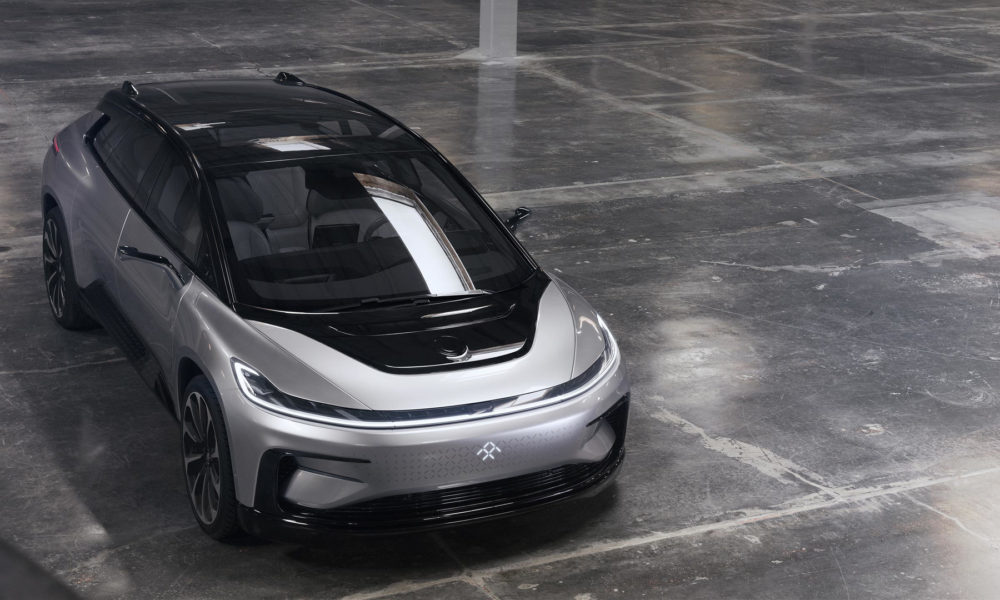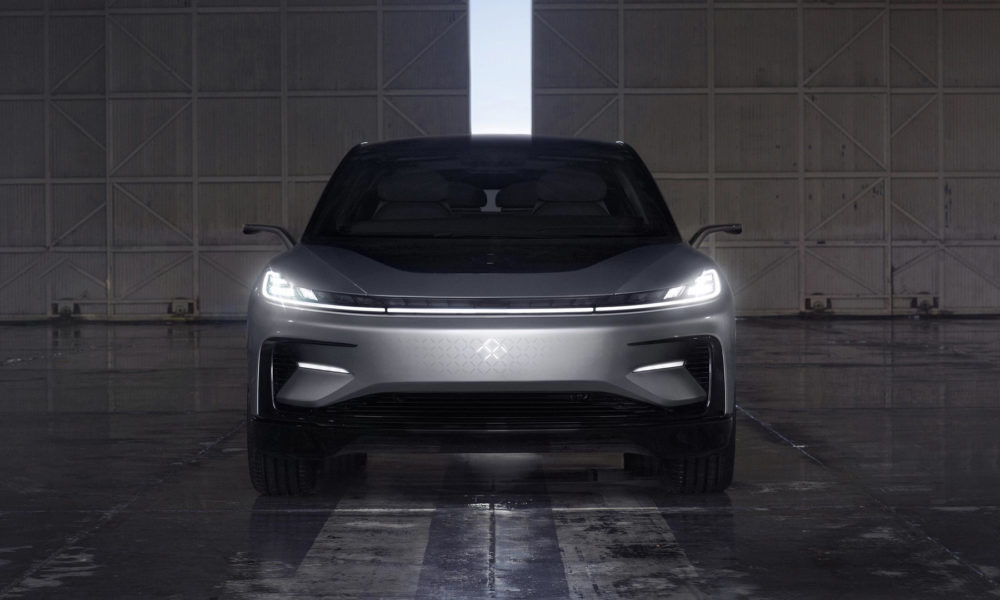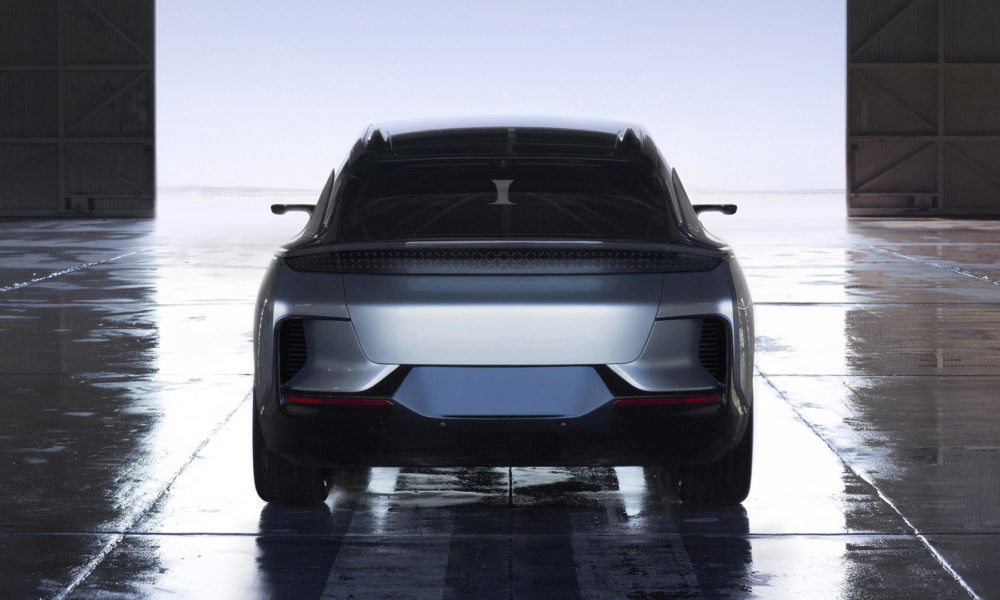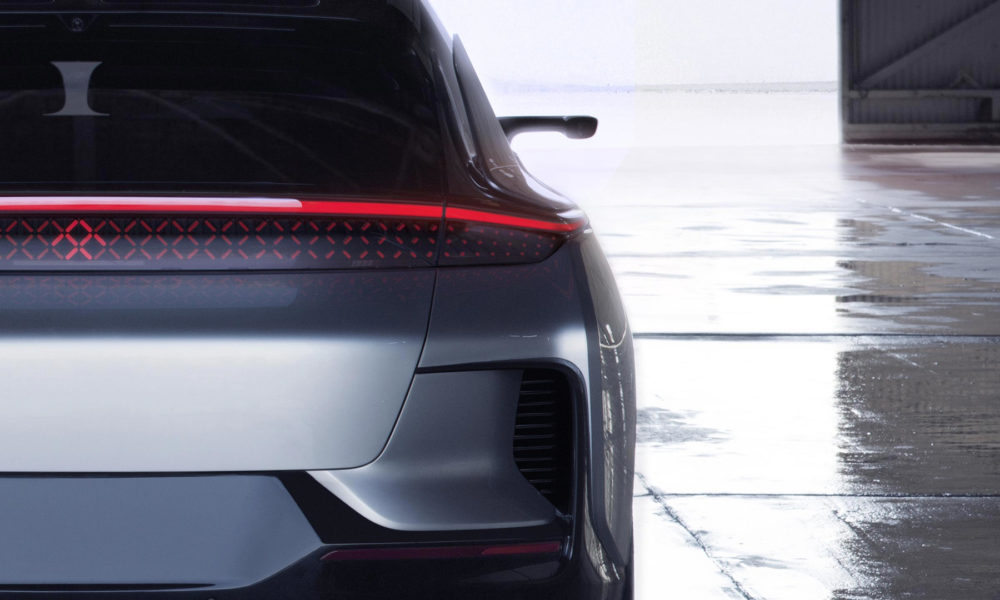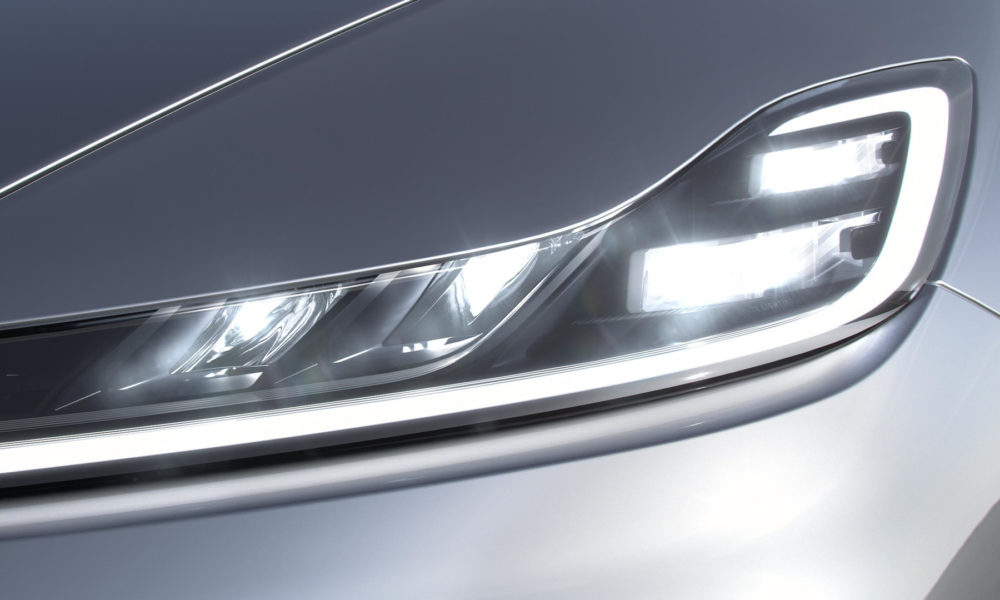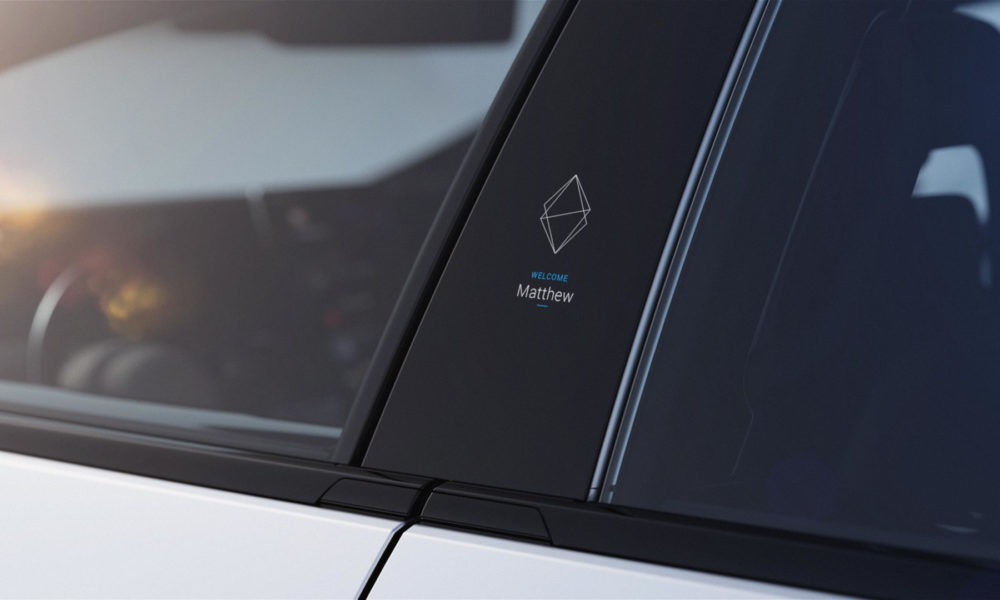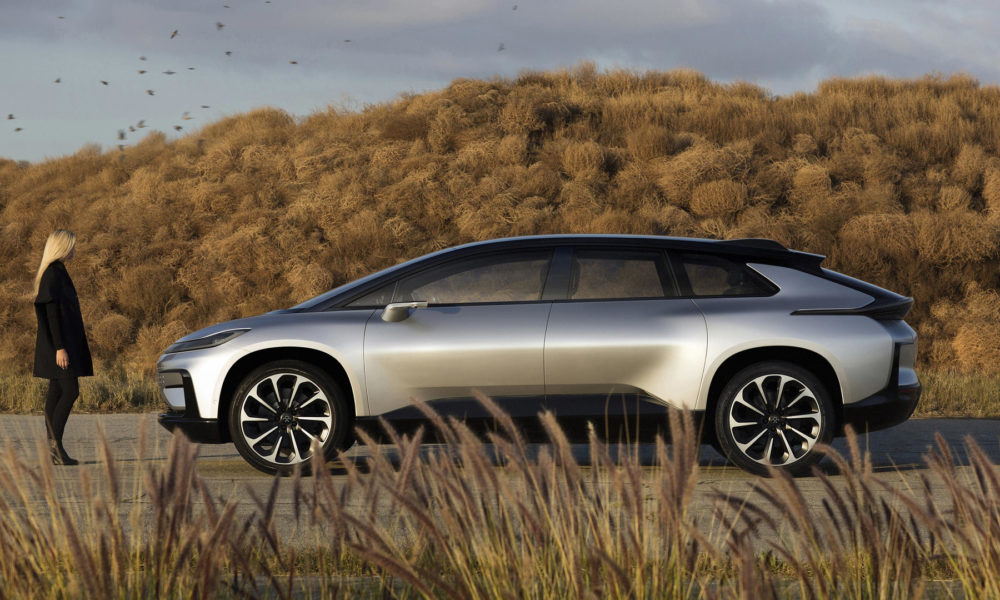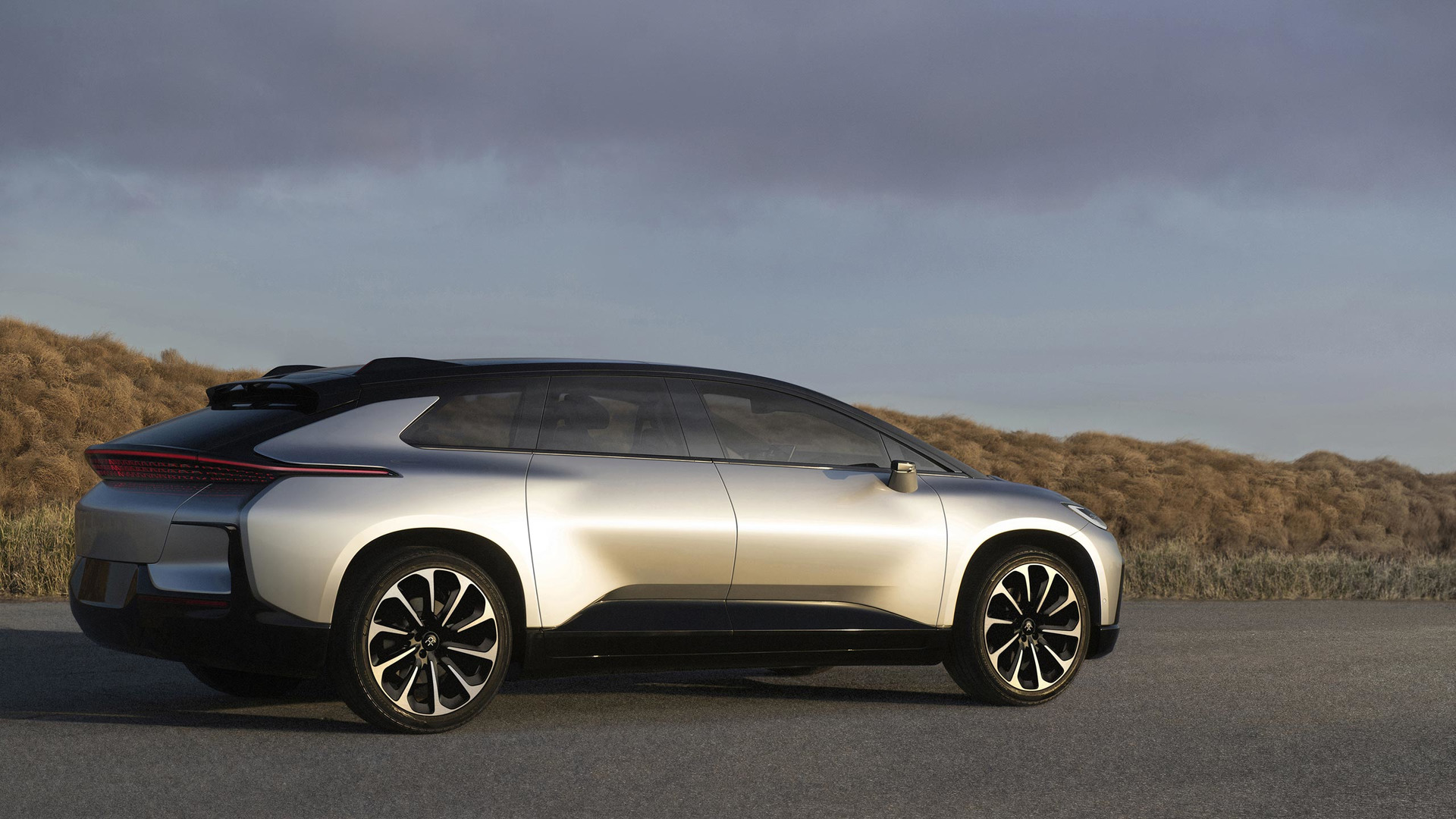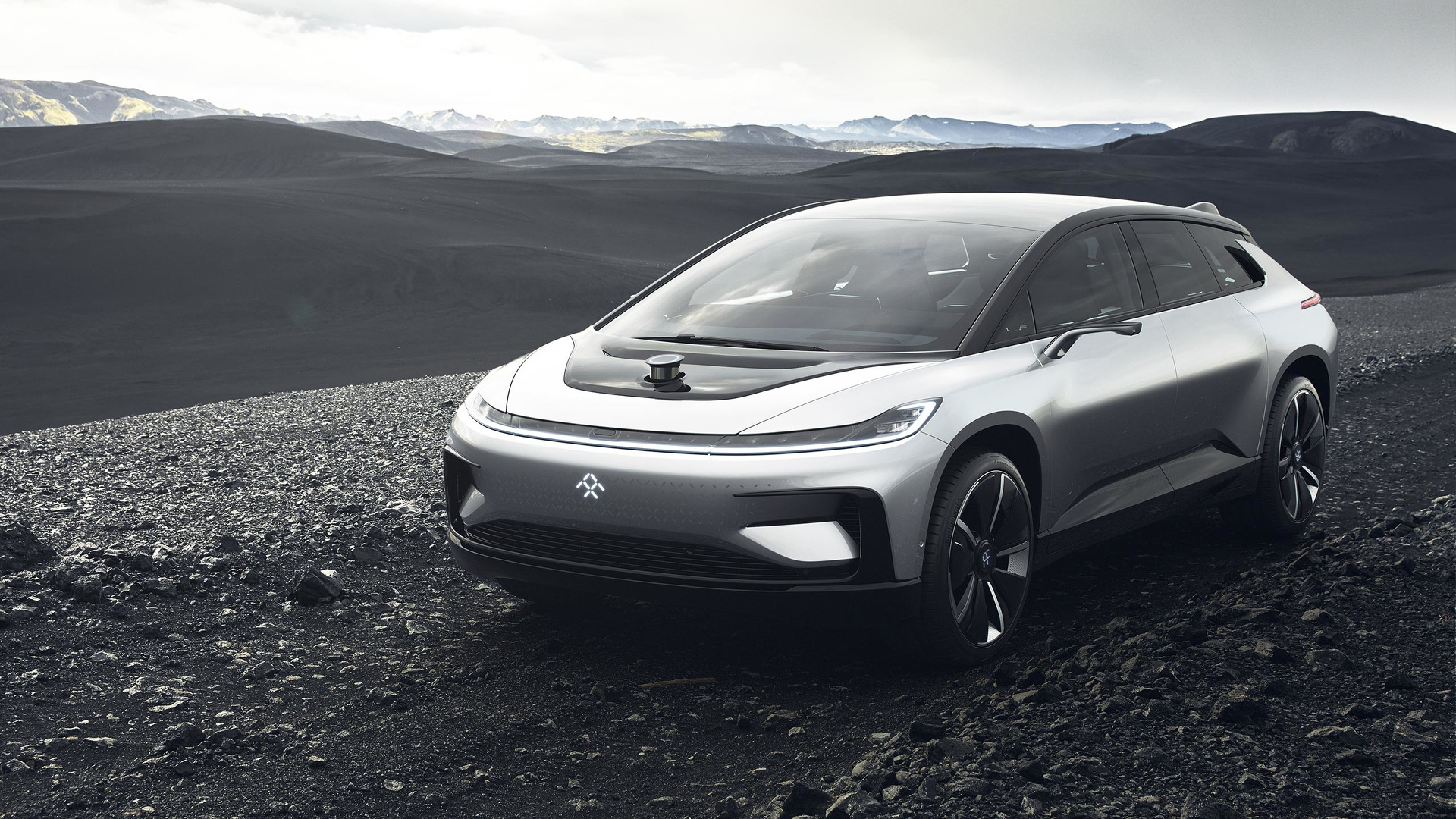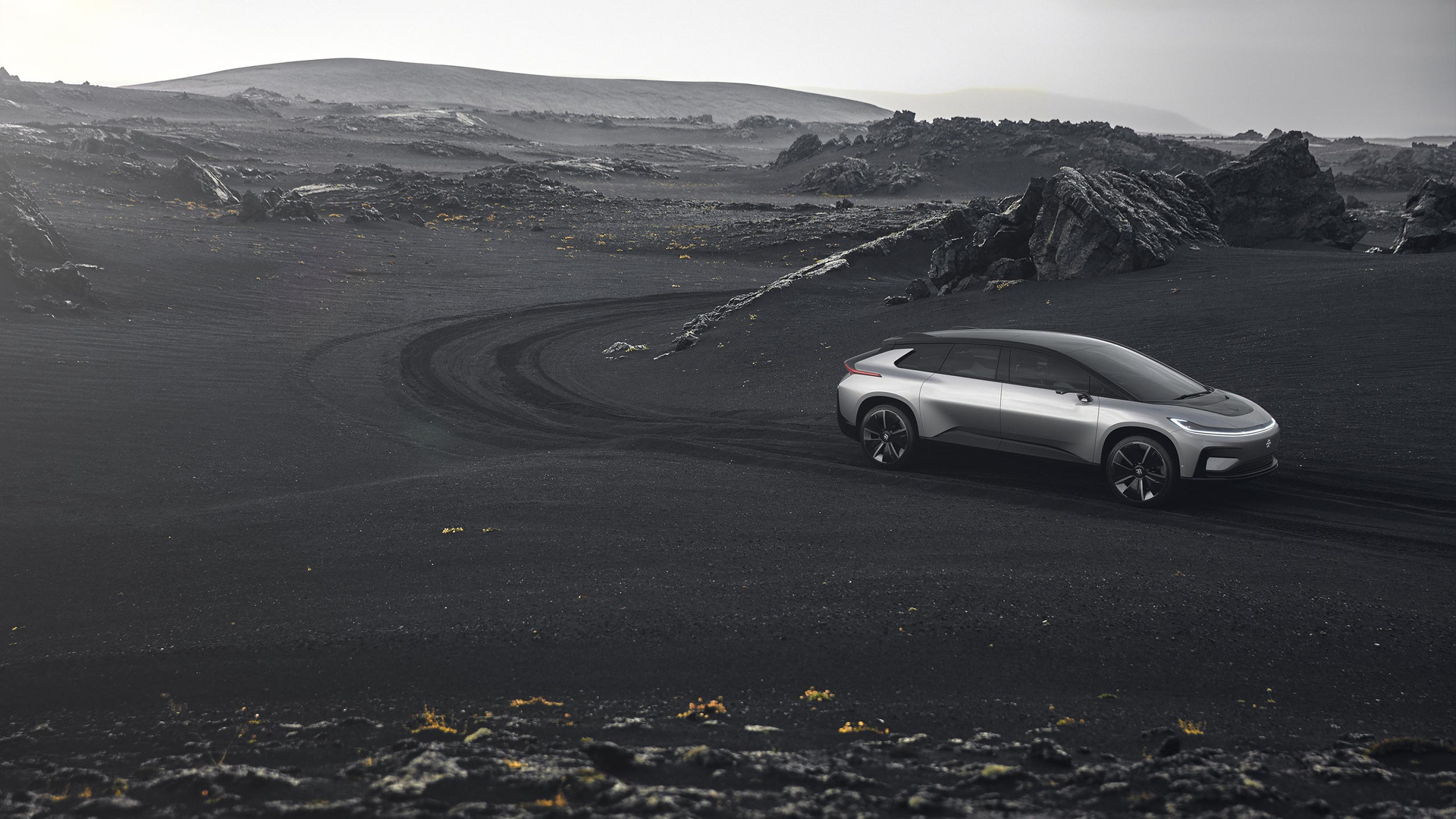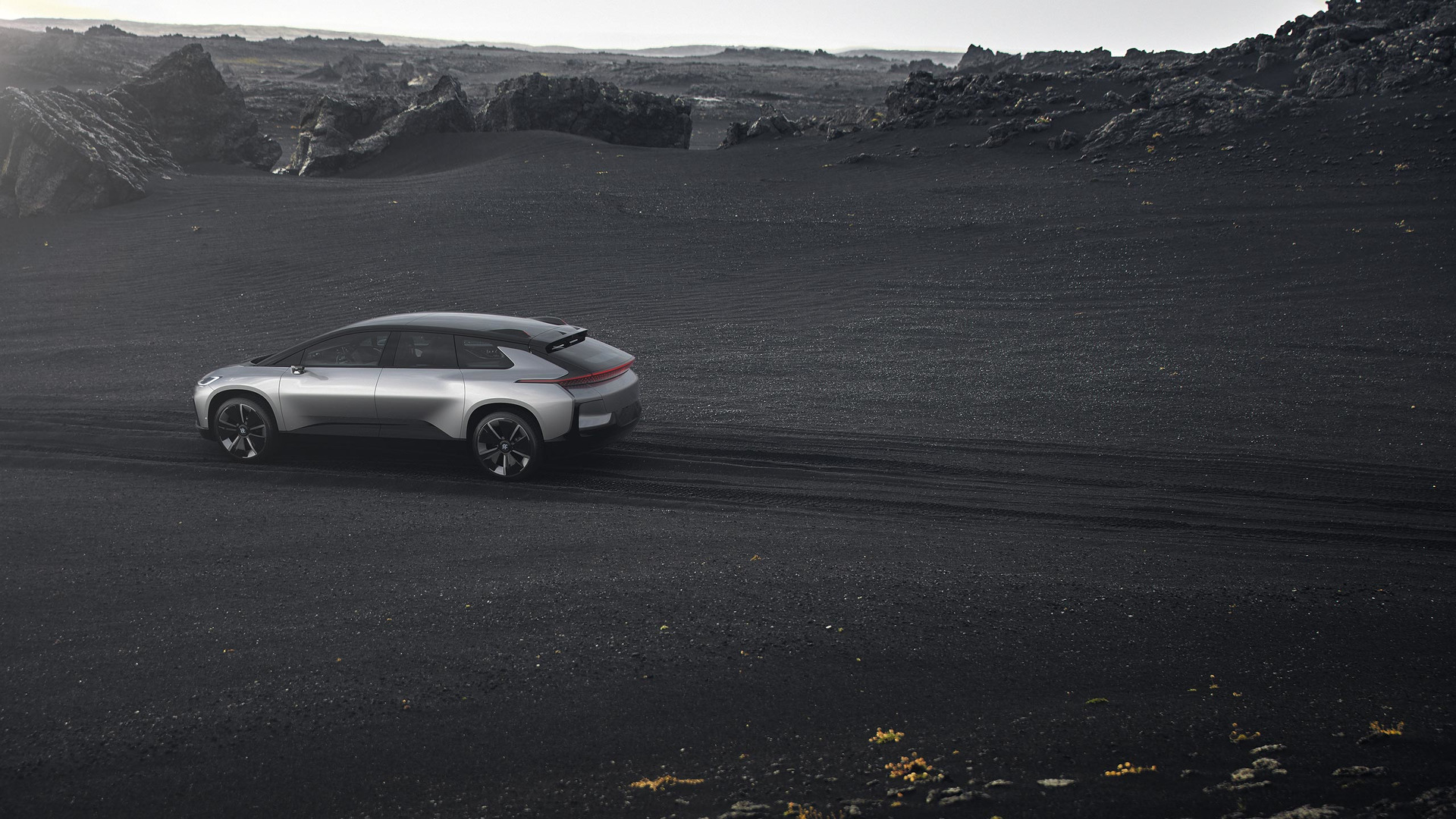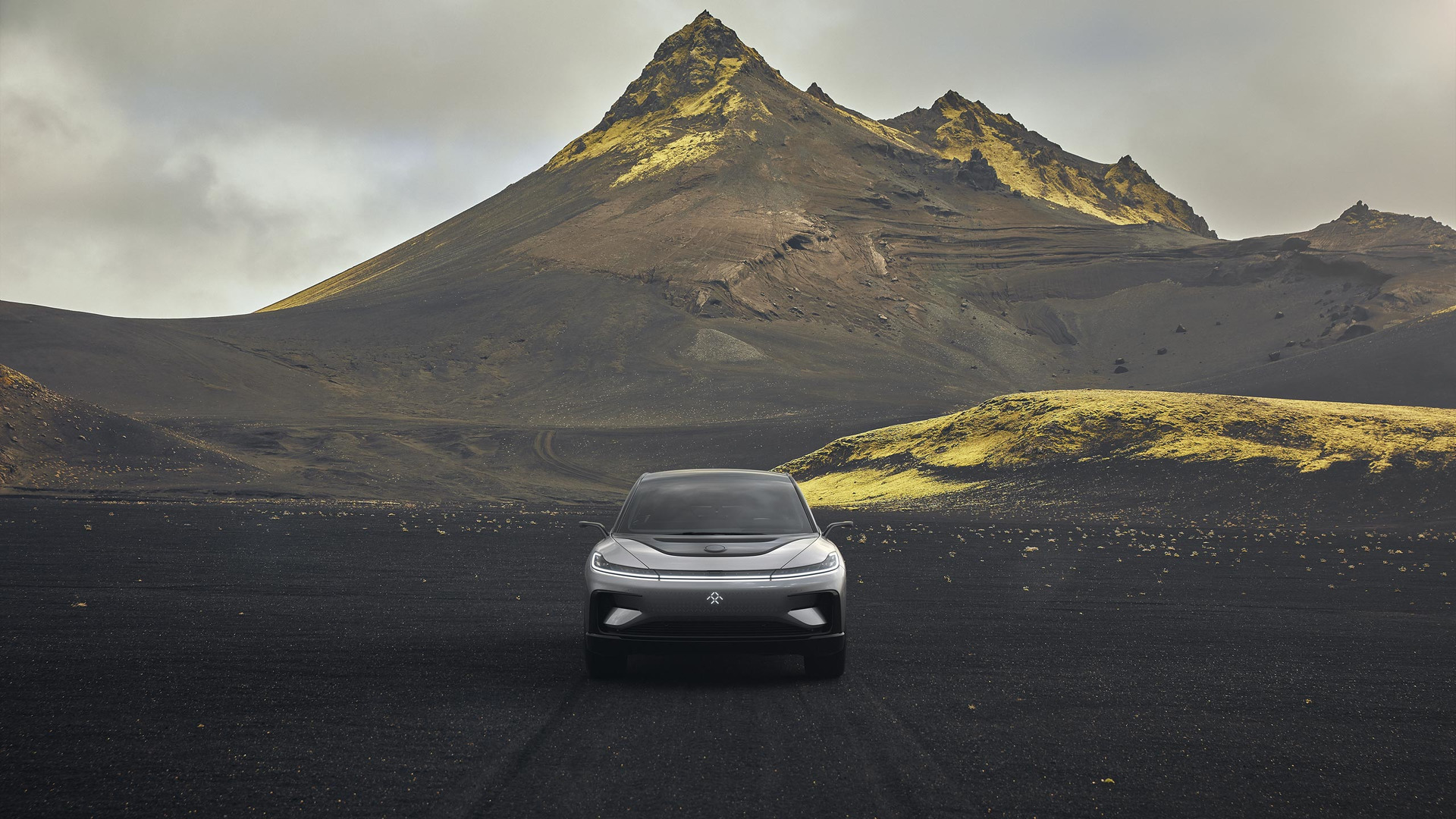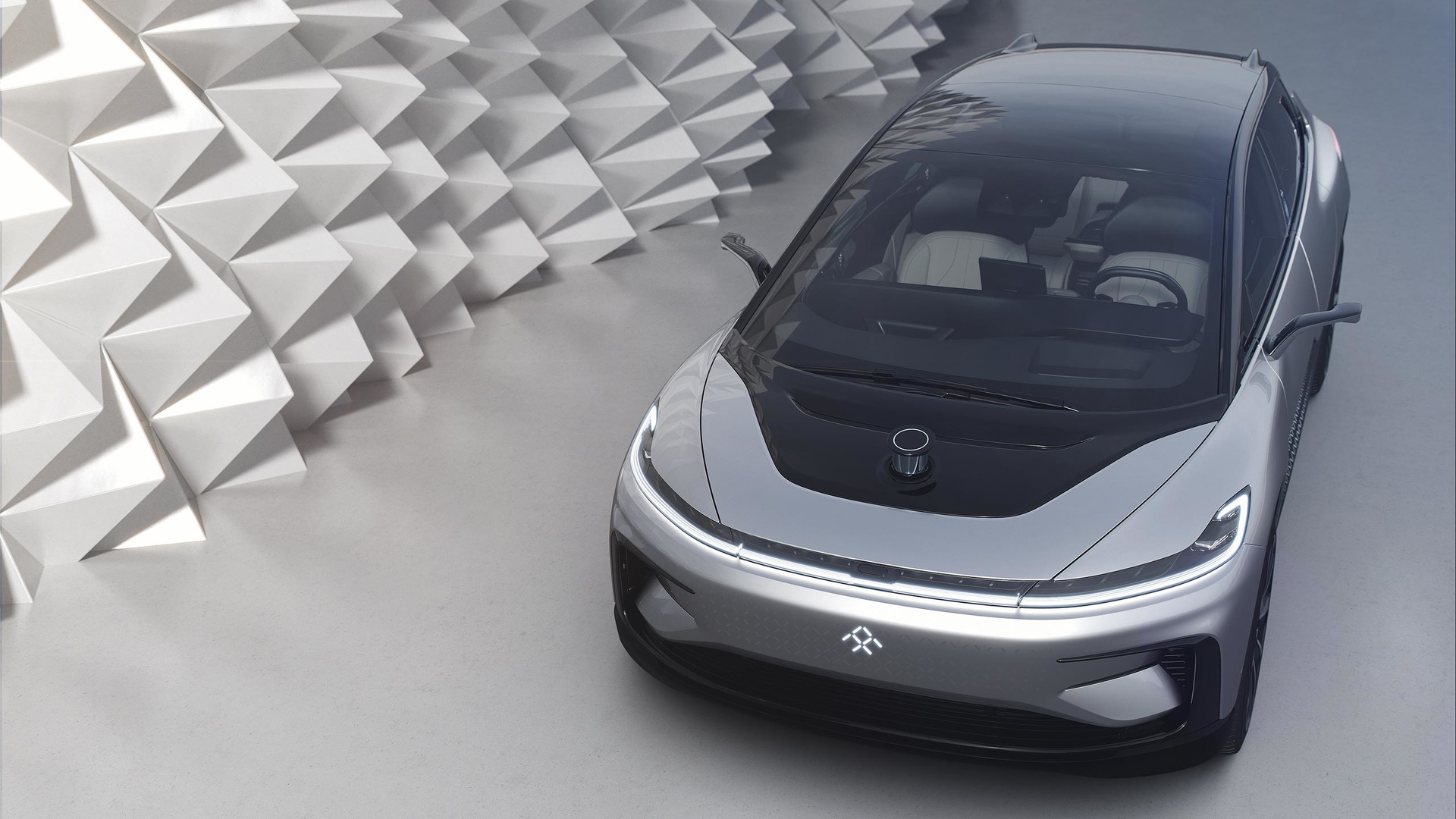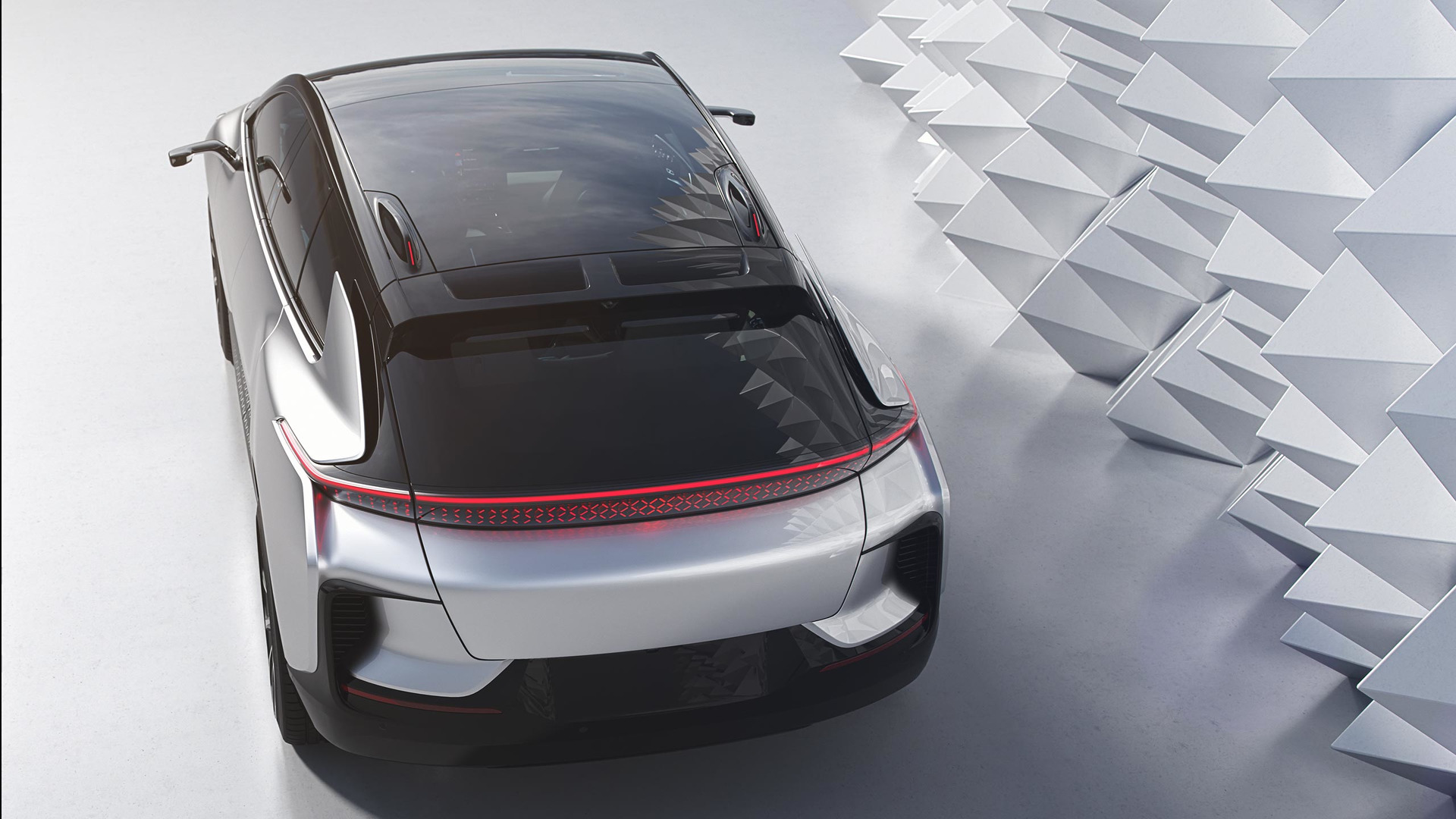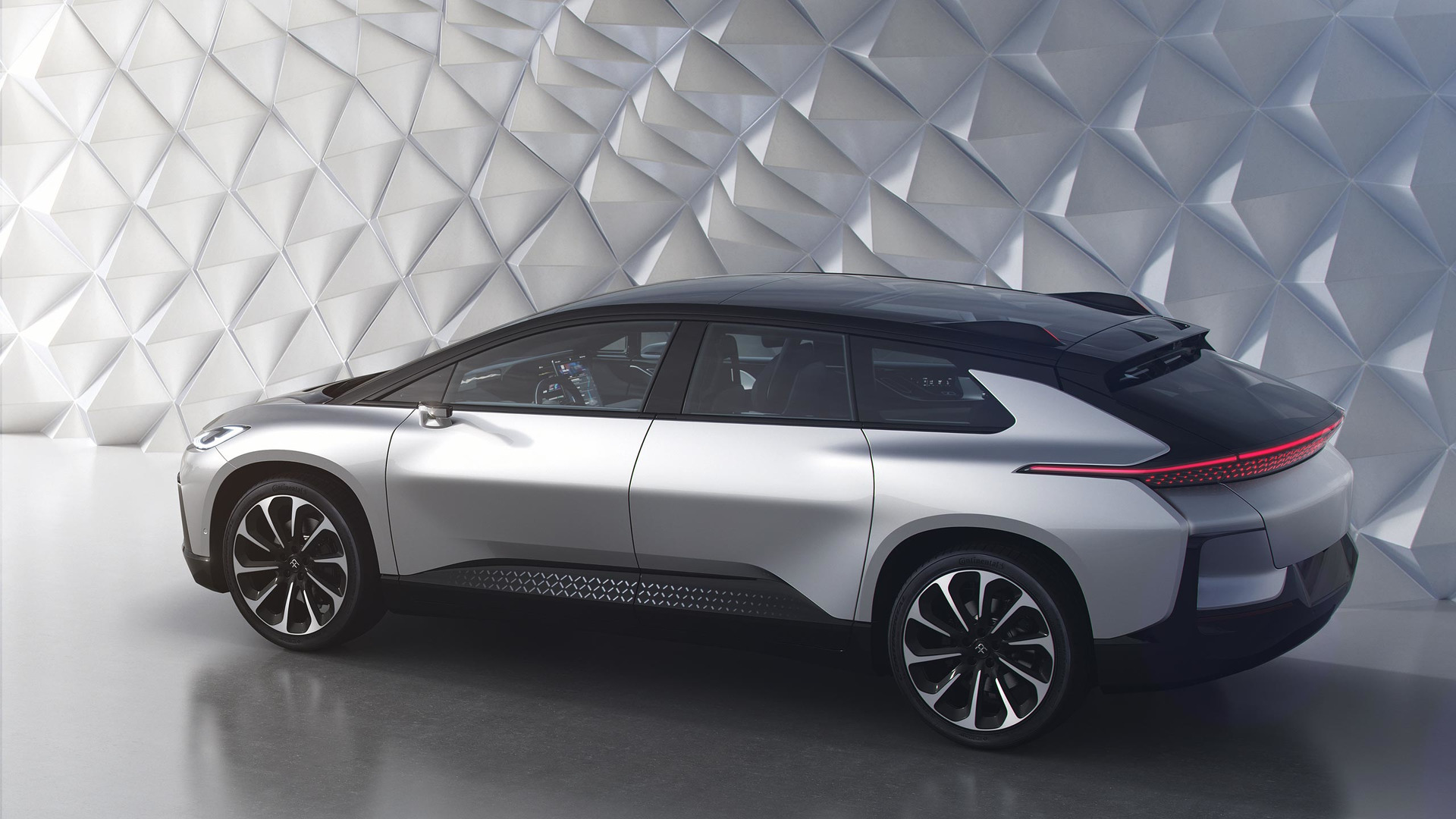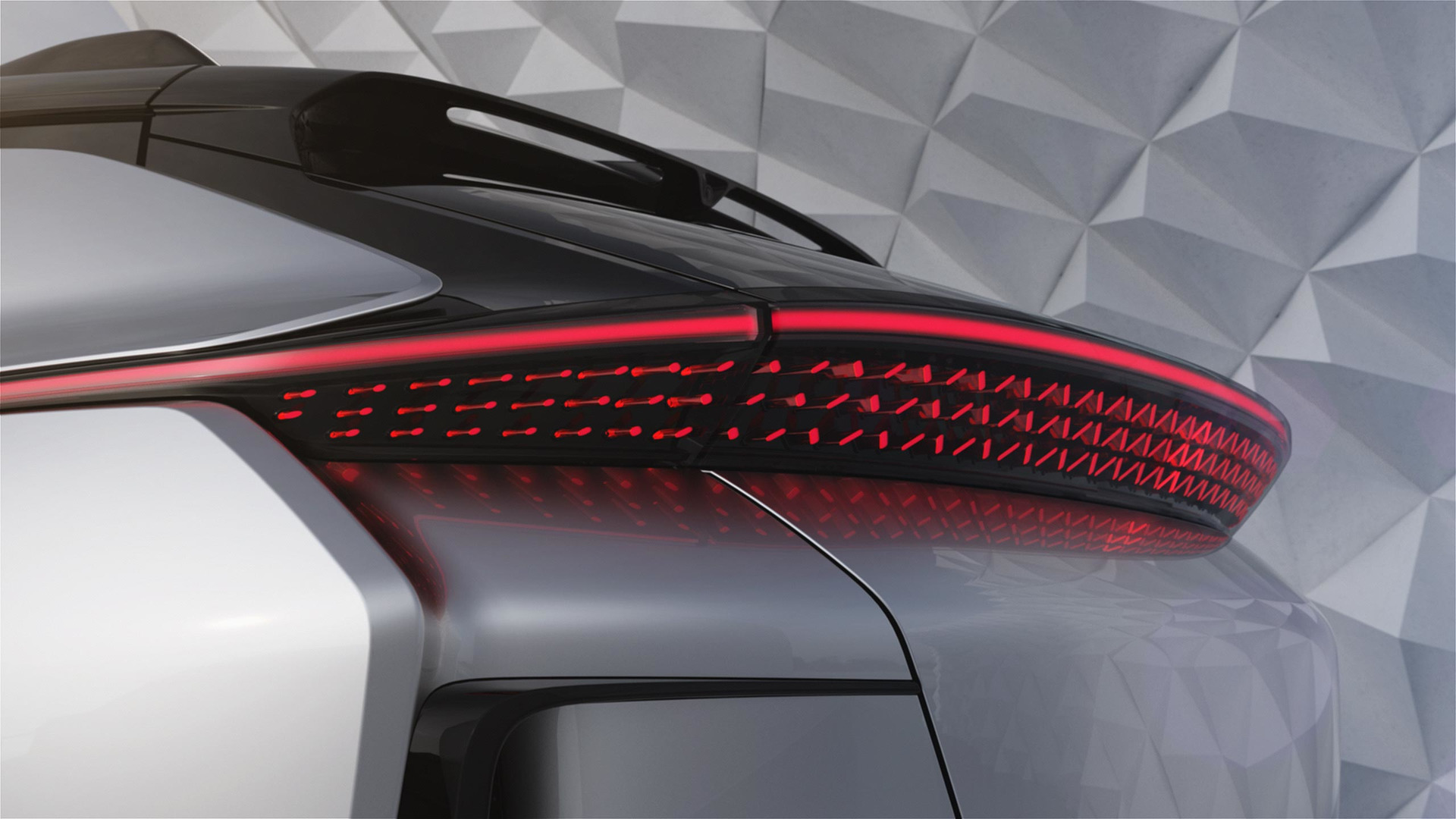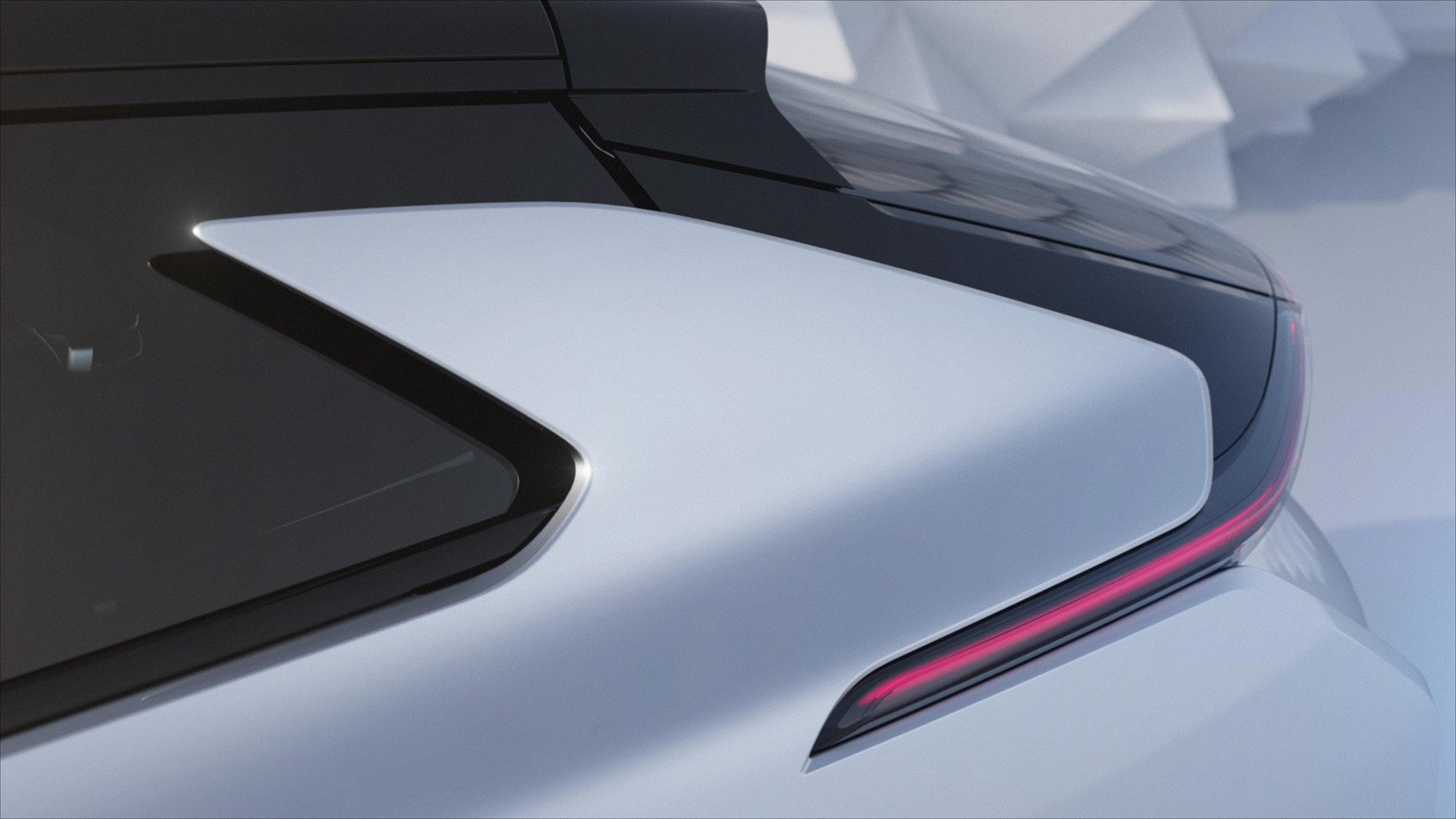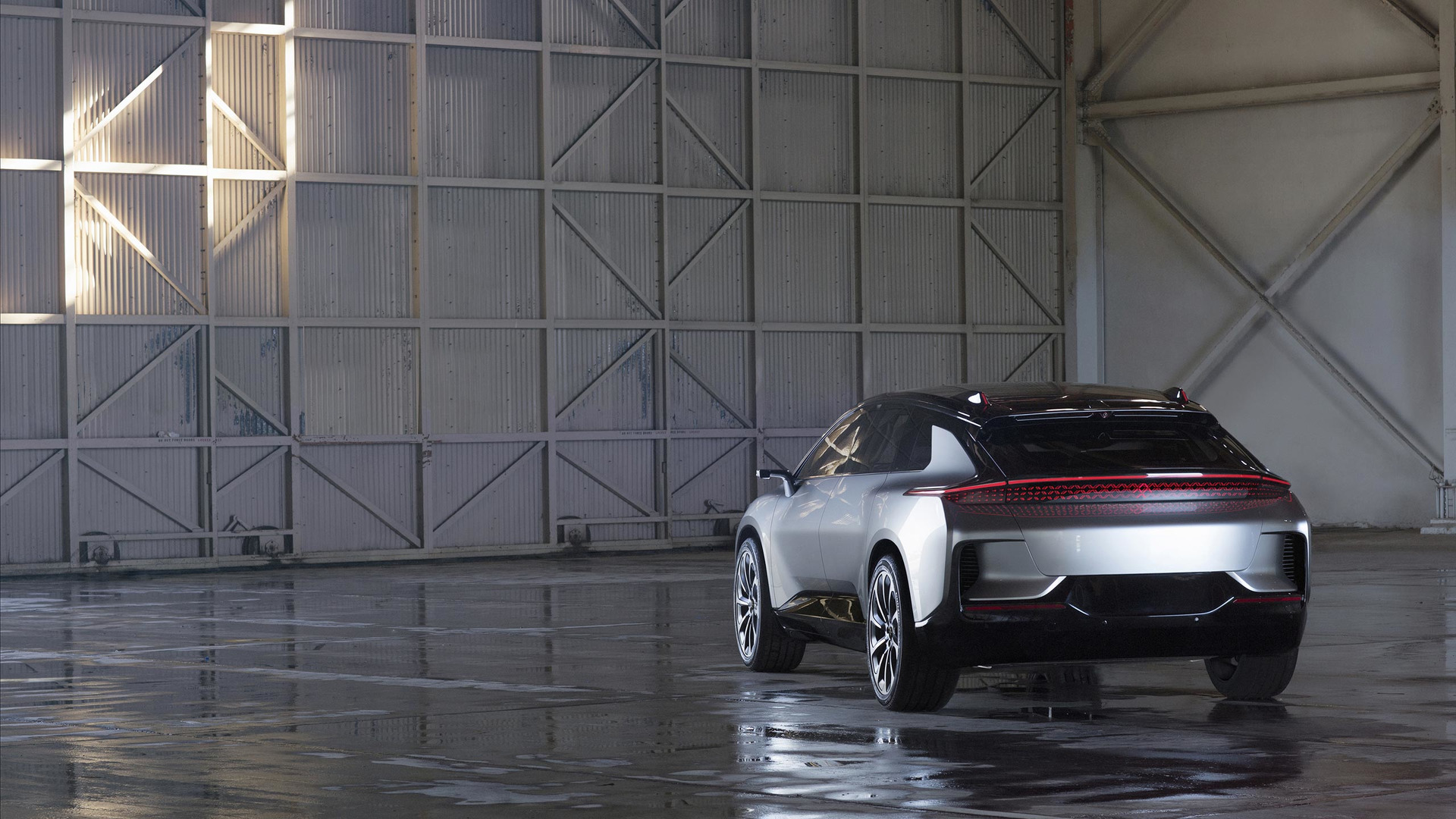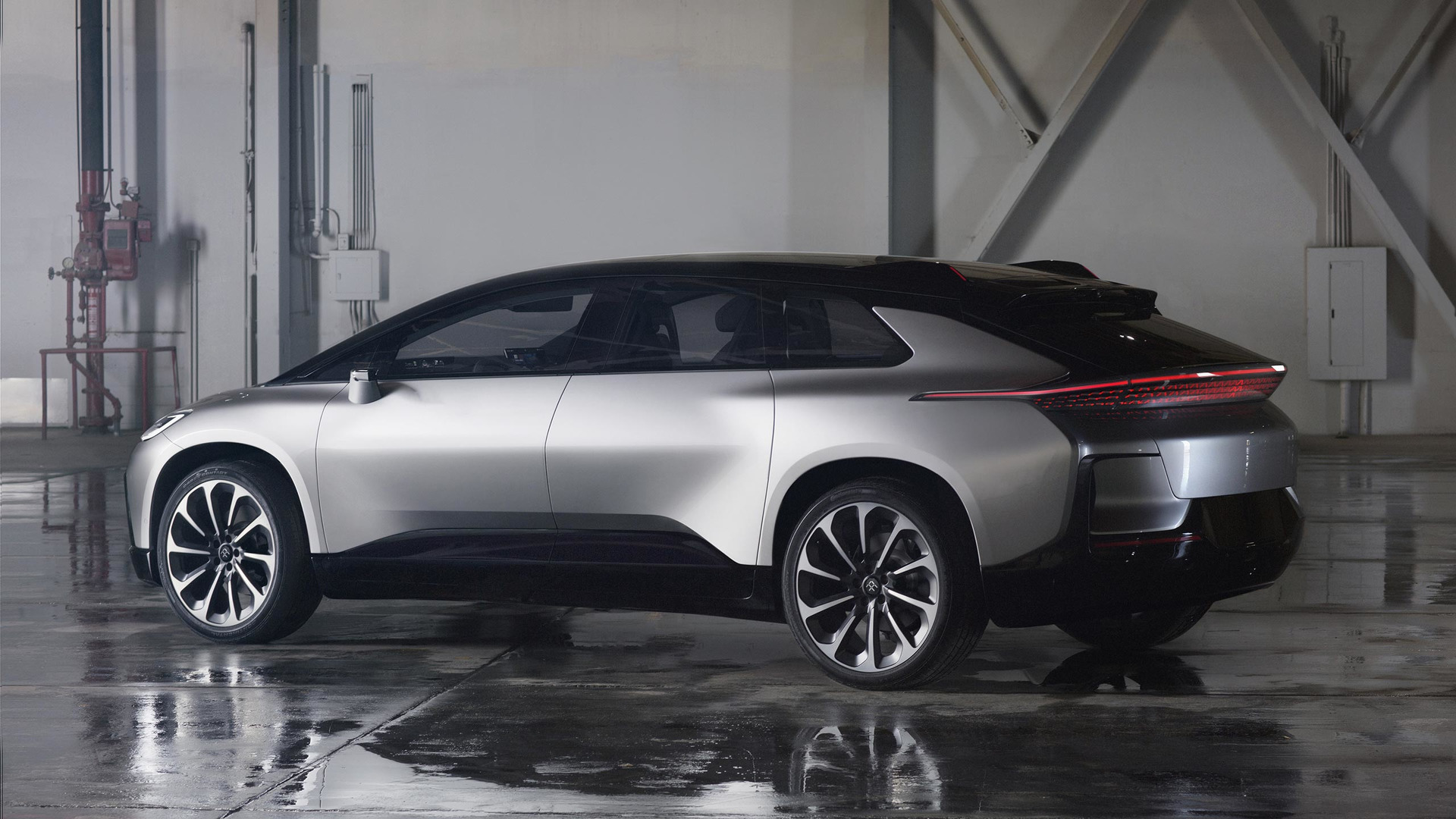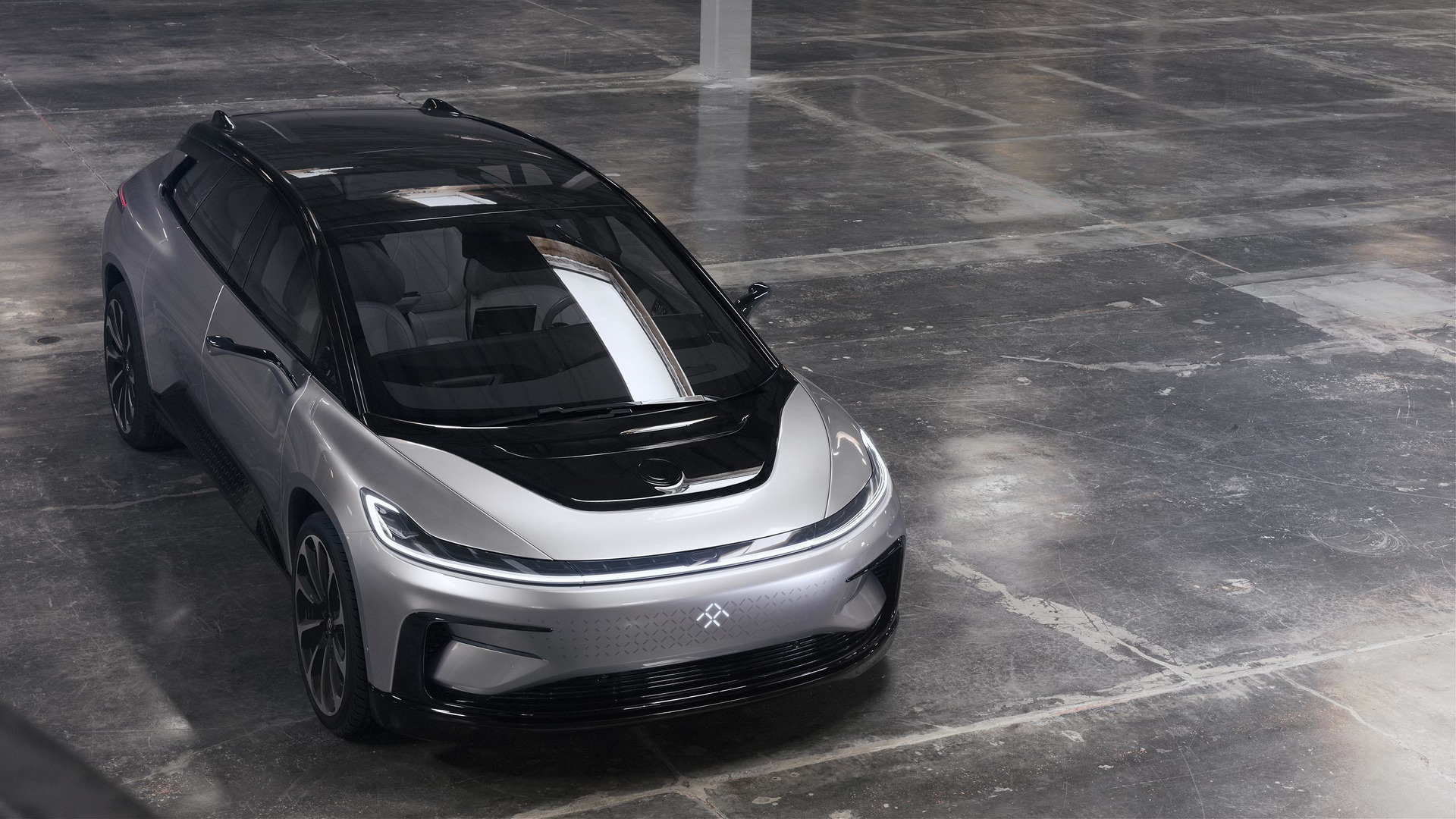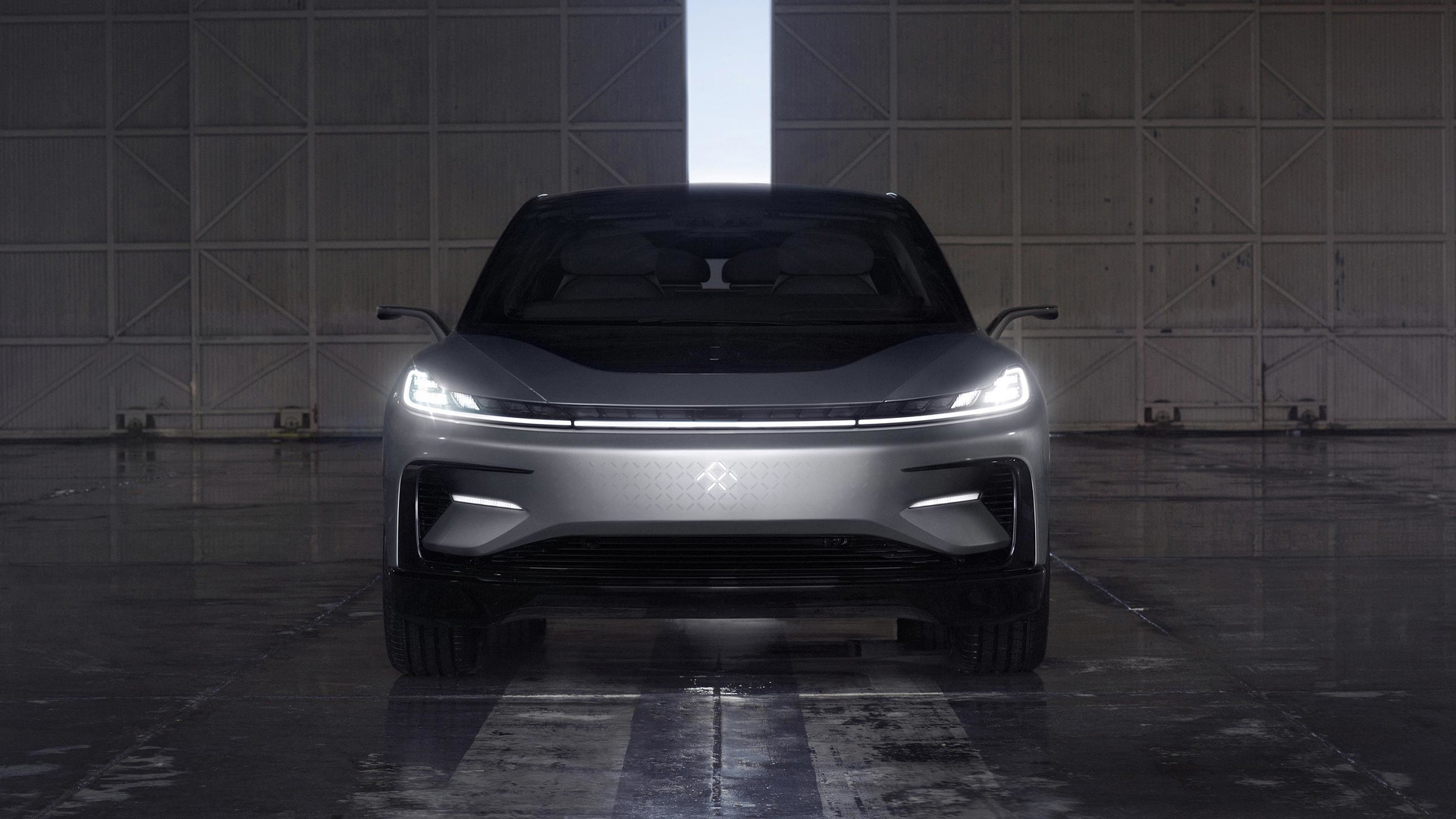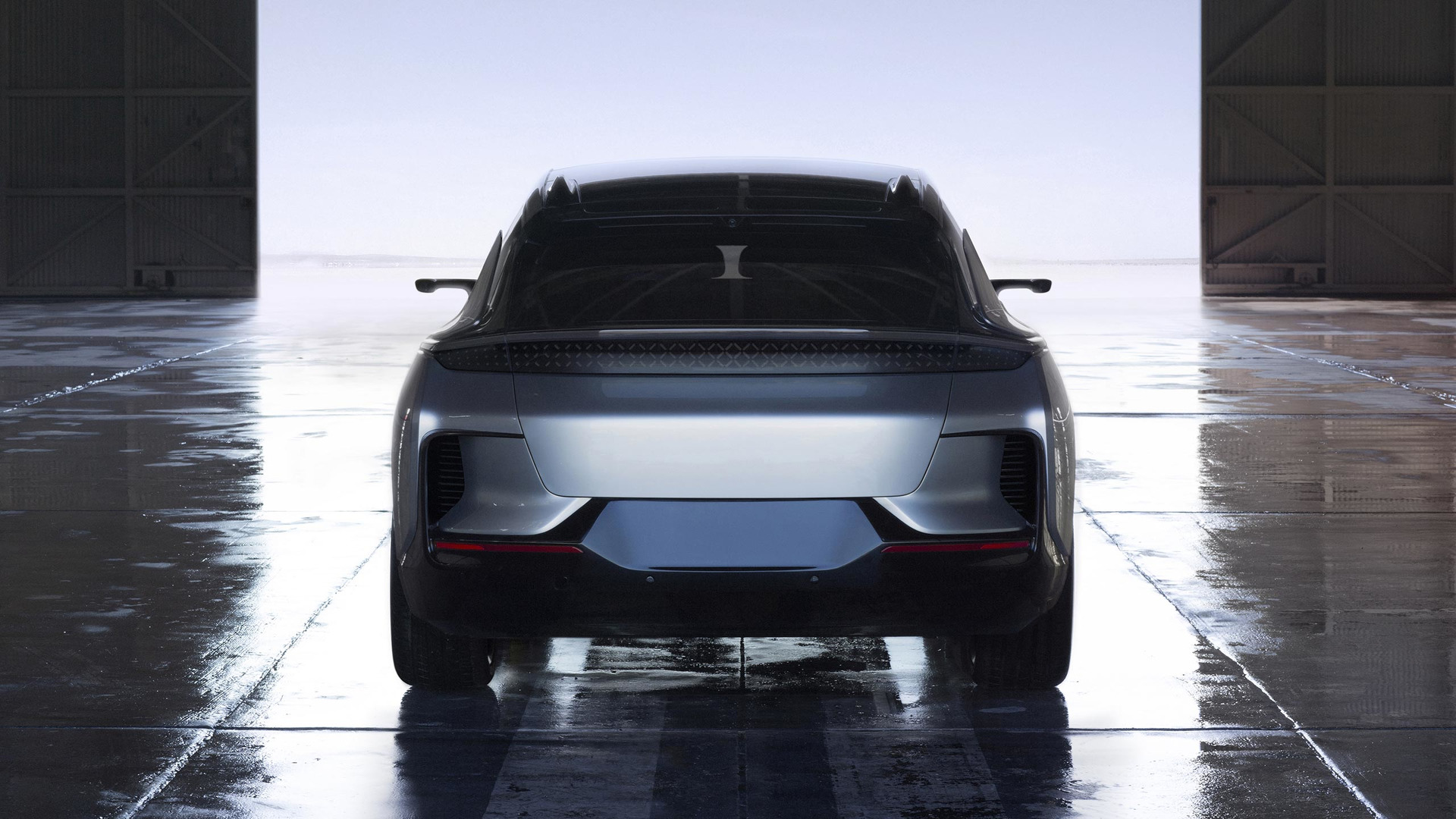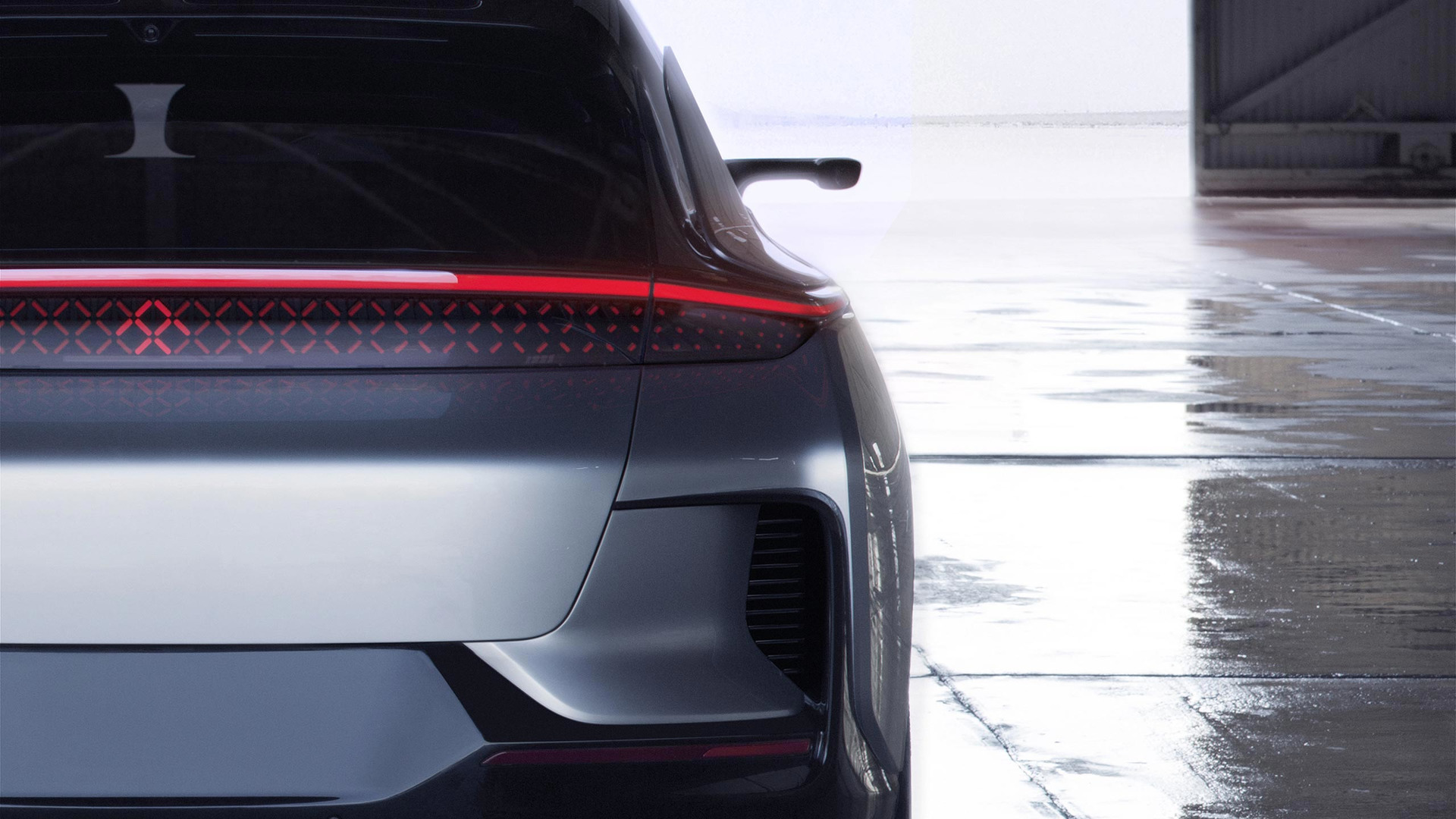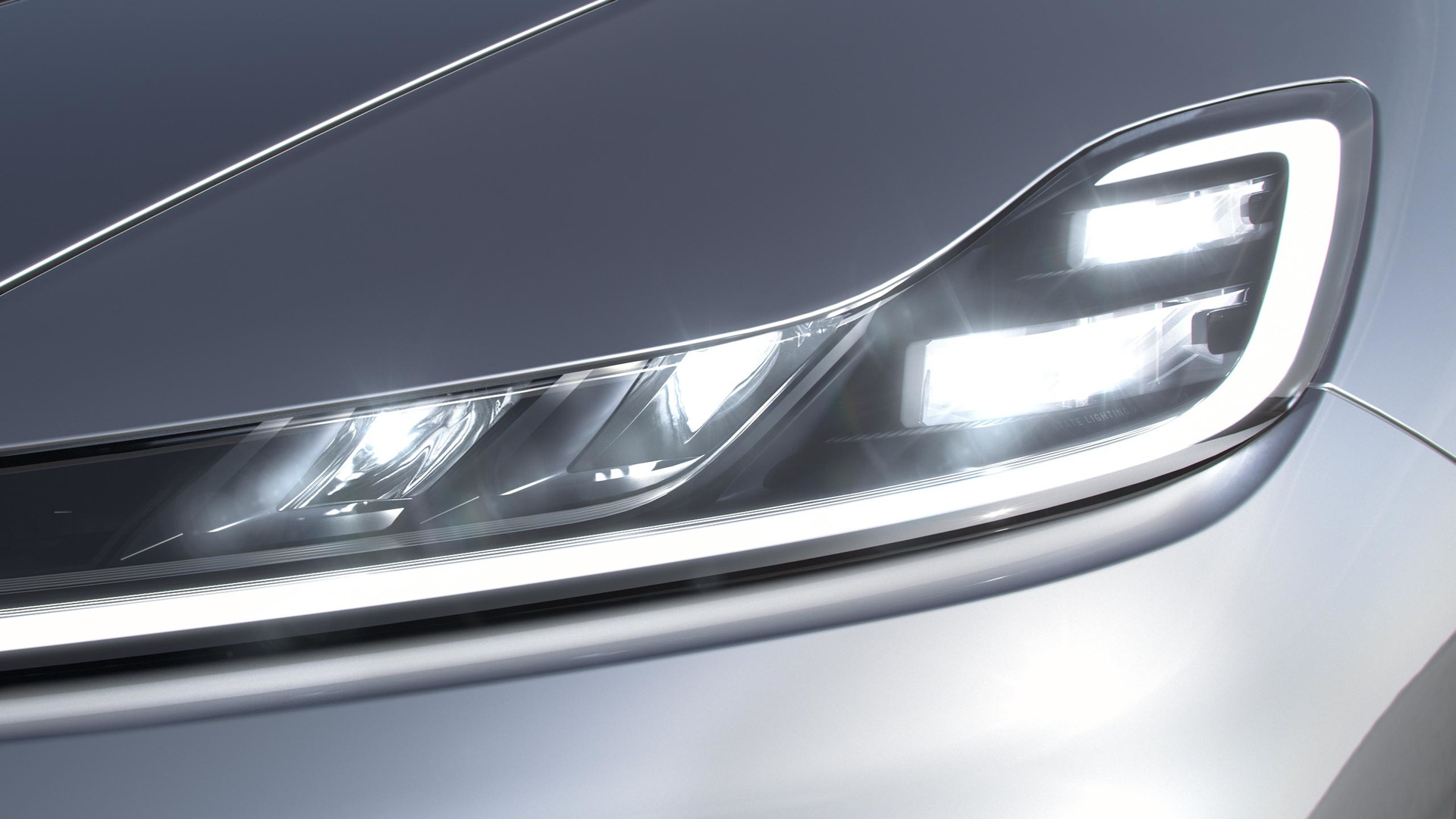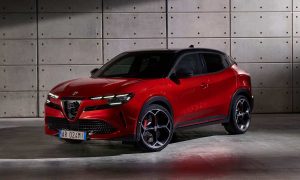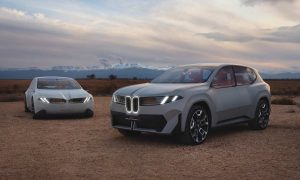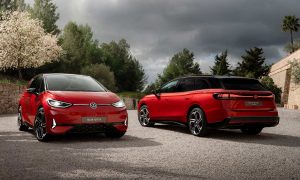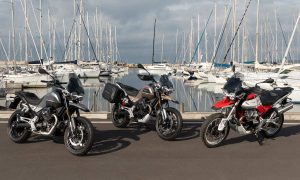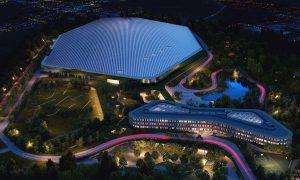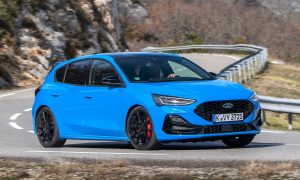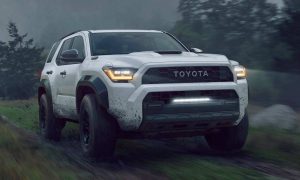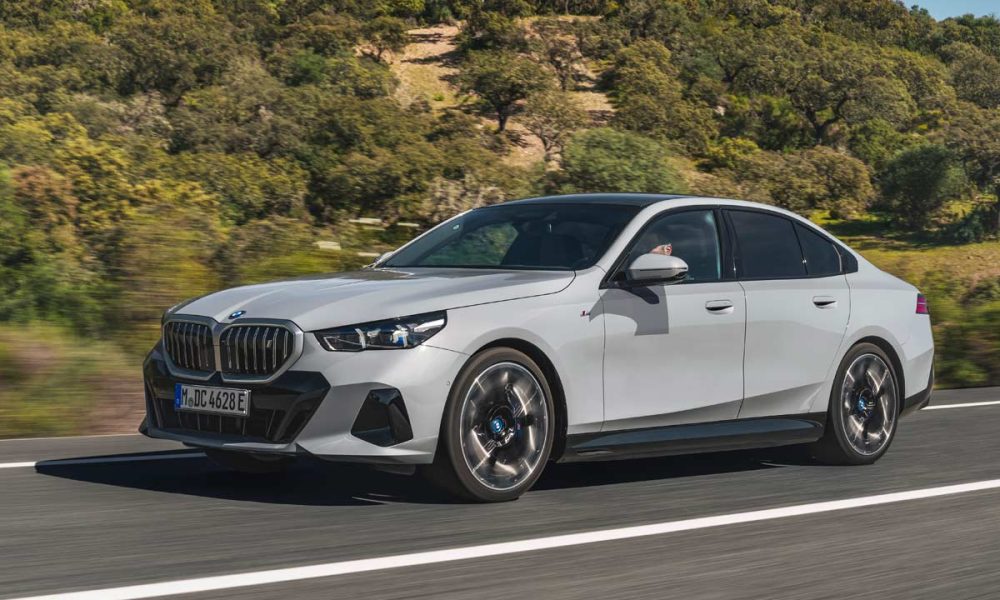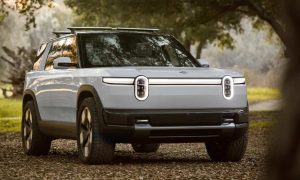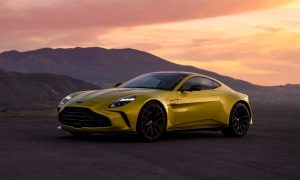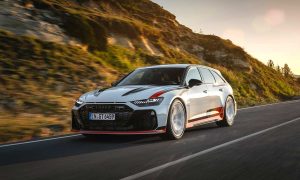LeEco-backed electric start-up Faraday Future has unveiled its first production car FF 91 (“nine one”) at CES 2017 in Las Vegas, Nevada. The company is also accepting reservations online, on its website ff.com for a refundable deposit of $5,000. The first 300 orders will have the option to upgrade to an exclusive launch series called the Alliance Edition in March 2017.
The FF 91 is an all-wheel drive crossover with monocoque construction, featuring a multi-motor setup that enables real-time torque vectoring to the rear wheels. There is ever-so-fascinating rear-wheel steering as well. The 3 motors make a combined 1,050 hp, to deliver a claimed 0-60 mph acceleration in 2.39 seconds. Power comes courtesy of a 130 kWh battery pack, with an estimated range of 608 km (EPA) and over 700 km (NEDC). The battery developed with LG Chem is claimed to be the world’s highest energy density battery. The home charger included with the vehicle can achieve 50 percent to full charge in under 4.5 hours at 240V, apparently.
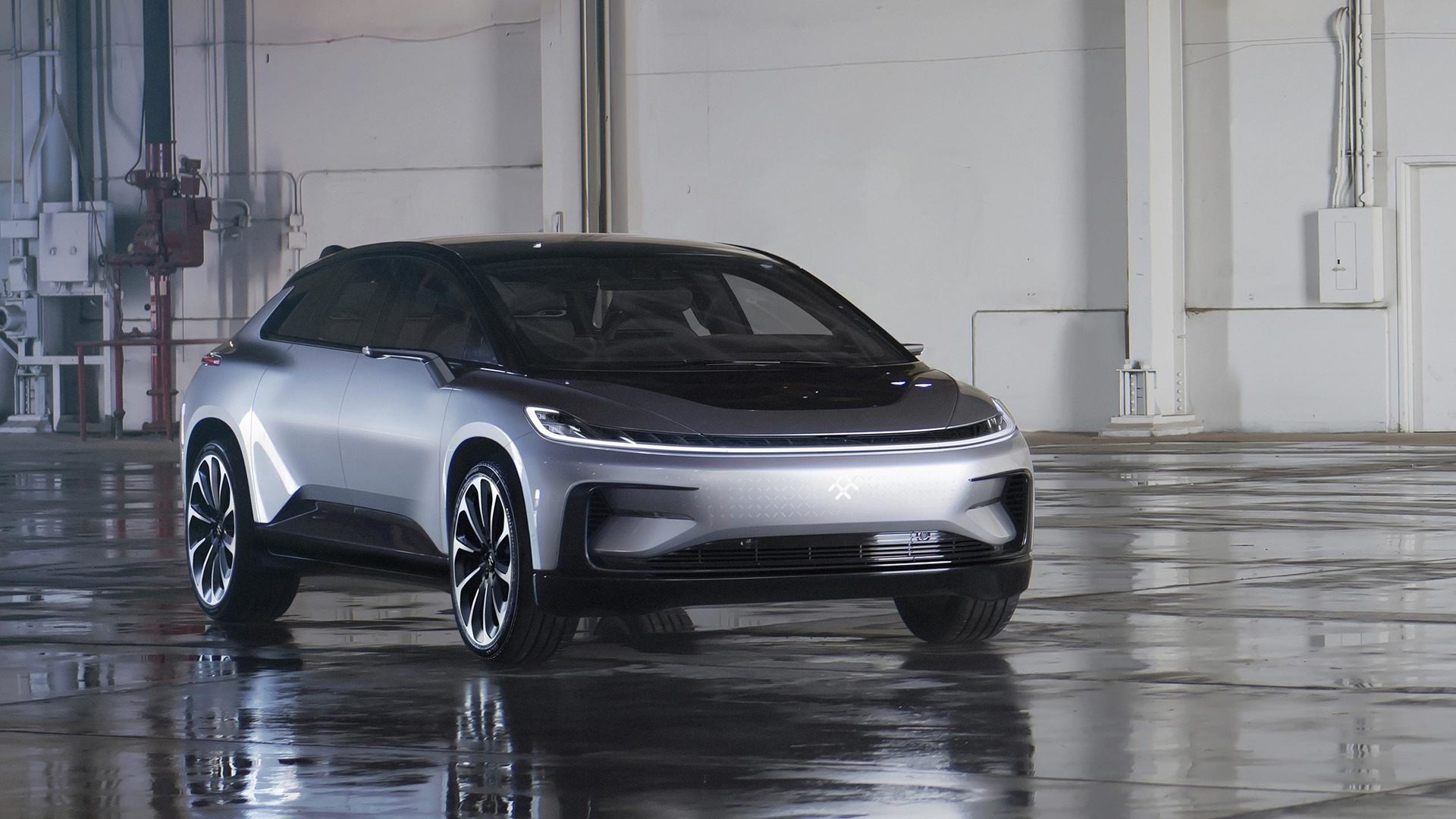 Dimensions: 5250 X 2283 X 1598 mm. Wheelbase: 3200 mm.
Dimensions: 5250 X 2283 X 1598 mm. Wheelbase: 3200 mm.
FF 91’s exterior lighting is focused on communication. The company says that the vehicle establishes a “deeper connection between car and driver”. When users approach FF 91, the vehicle’s rocker panel illuminates with an owner confirmation sequence that brightens based on proximity. The system uses intuitive patterns to communicate messages to its users, like the welcome sequences and charging states, as well as autonomous driving mode prompts. By design, the lighting system is said to improve safety by informing pedestrians and other drivers when FF 91 is driving autonomously.
On the inside, the seats are claimed to deliver industry-leading rear-seat reclining angles; lower leg, lumbar, upper back adjustments and all that support. The seats also offer massage, heating, and ventilation for cooling. The FF 91’s panoramic roof comes with a smart dimming glass technology. The glass roof, rear and side windows all feature PDLC (Polymer Dispersed Liquid Crystal) glass, which is operated by users tapping on the glass, helping with privacy and shade from the exterior environment.
The company also claims to offer next-gen connectivity and personalization with the FF 91. The user can create an FFID – a global profile that travels with users through the FF EcoSystem and remembers personal preferences, such as the seating positions, favorite music and movies, ideal temperatures, and driving style settings.
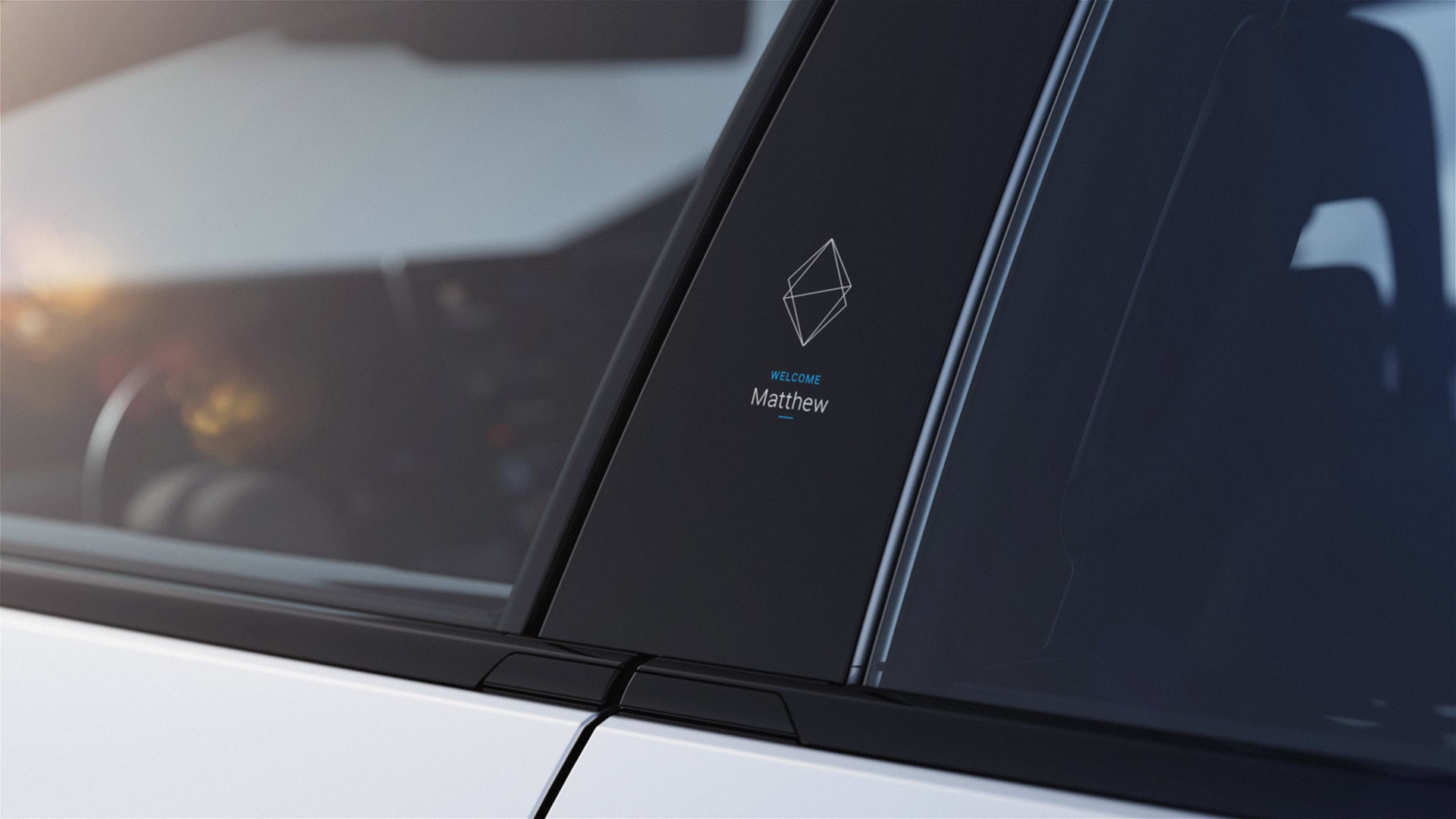
Additionally, the FF uses a facial recognition technology called Arrival Interface, allowing drivers and passengers to unlock the car without a key. A camera installed in the B-pillar between front and back seats can accurately identify the user’s face to grant vehicle entry. Similarly, interior cameras use this technology to recognize users and automatically adjust interior settings to their preferences. The FF 91 can not only recognize faces, but also facial expressions and moods it uses to auto-prompt an experience to match, using music, temperature, scent, content, massage and more. Users’ facial recognition data is saved natively and securely in the vehicle, the company said. The FFCTRL app allows users to customize and control their in-vehicle experience, get real-time vehicle status reports, summon your vehicle, and more.
As for safety, the FF 91 is claimed to be the first production vehicle to feature retractable 3D lidar, a critical component for autonomous driving. Lidar is part of a complex sensor system including 10 high definition cameras, 13 long and short range radars and 12 ultrasonic sensors. The FF 91 is claimed to possesses significantly more sensors compared to other vehicles, and industry-leading computing power to quickly extract data from all those sensors and correct driving decisions.
The standard rearview mirror has been replaced by a high definition display that merges the live feed from the side mirrors and rearview camera into a seamless single image. The camera’s strategic placement is claimed to provide a much better vantage point of what’s surrounding the vehicle, virtually eliminating blind spots. The FF has a Driverless Valet parking feature, which enables the car to park itself after the driver has exited the vehicle. Powered by the FFCTRL app, drivers can also summon the vehicle from its parking spot or schedule a pick up at a desired time and location.
The production of FF 91 is planned to start in 2018, and a portion of the sales proceeds for each Alliance Edition sold will be donated towards an environmental fund. Additionally, the first unit of the FF 91 Alliance Edition will be auctioned at a gala in March. All proceeds from the first Alliance Edition’s auction will also be donated to the environmental fund.
Headquartered in California, the FF employs over 1,400 people, with Nick Sampson as its SVP of R&D and Engineering. Nick was the Director of Vehicle and Chassis Engineering at Tesla Motors and before that, he was the Chief Engineer and Program Director at Lotus.
Read More here

Leave a Reply
Note: Comments that are unrelated to the post above get automatically filtered into the trash bin.
